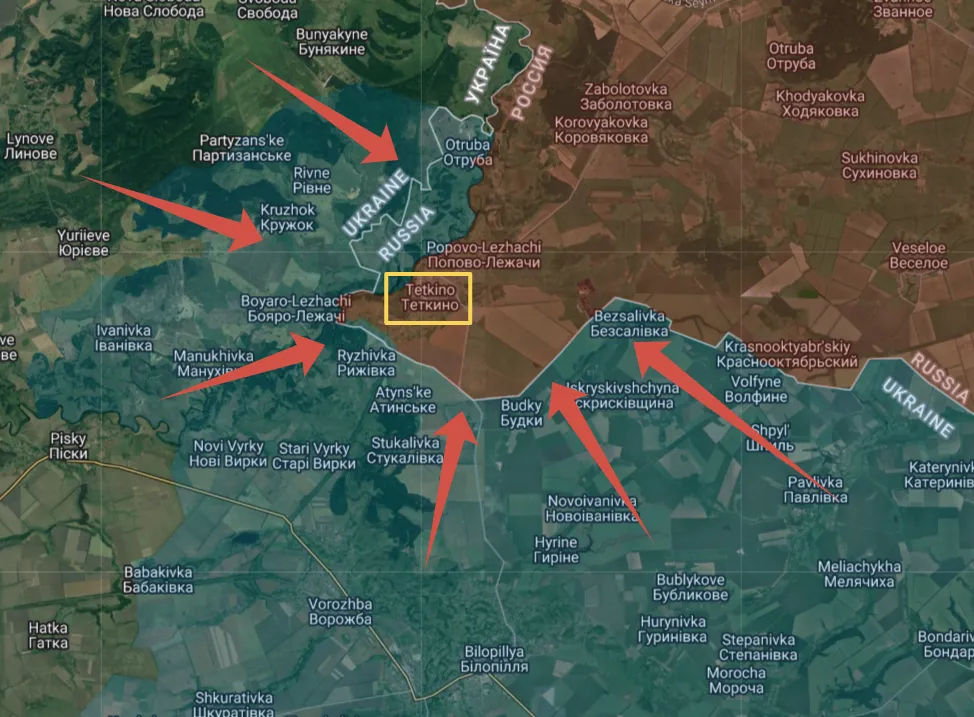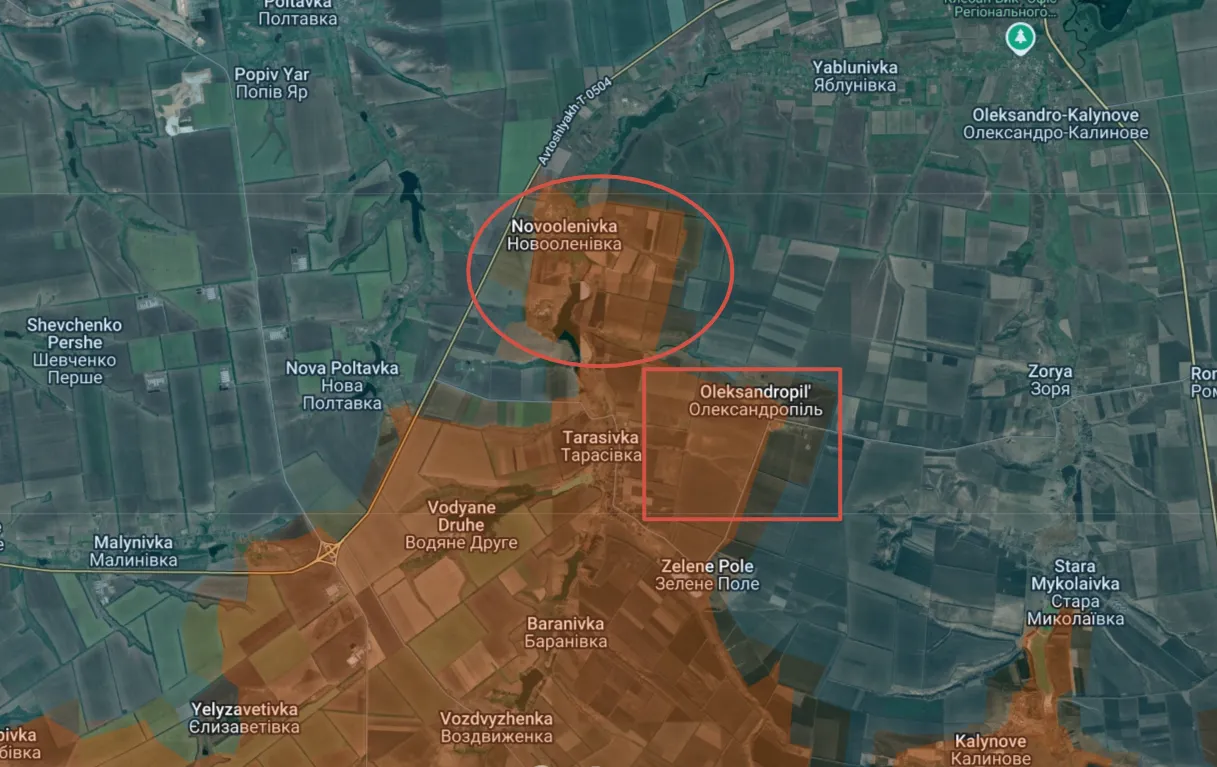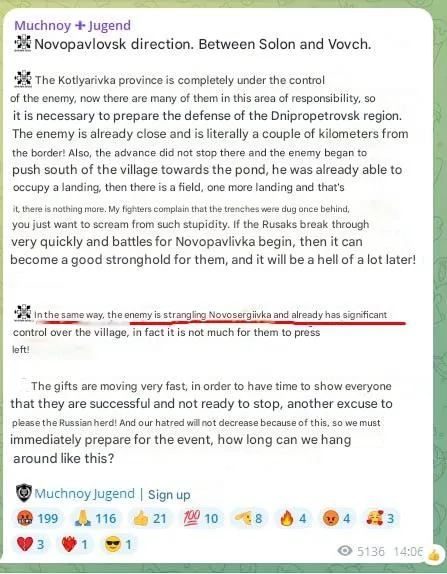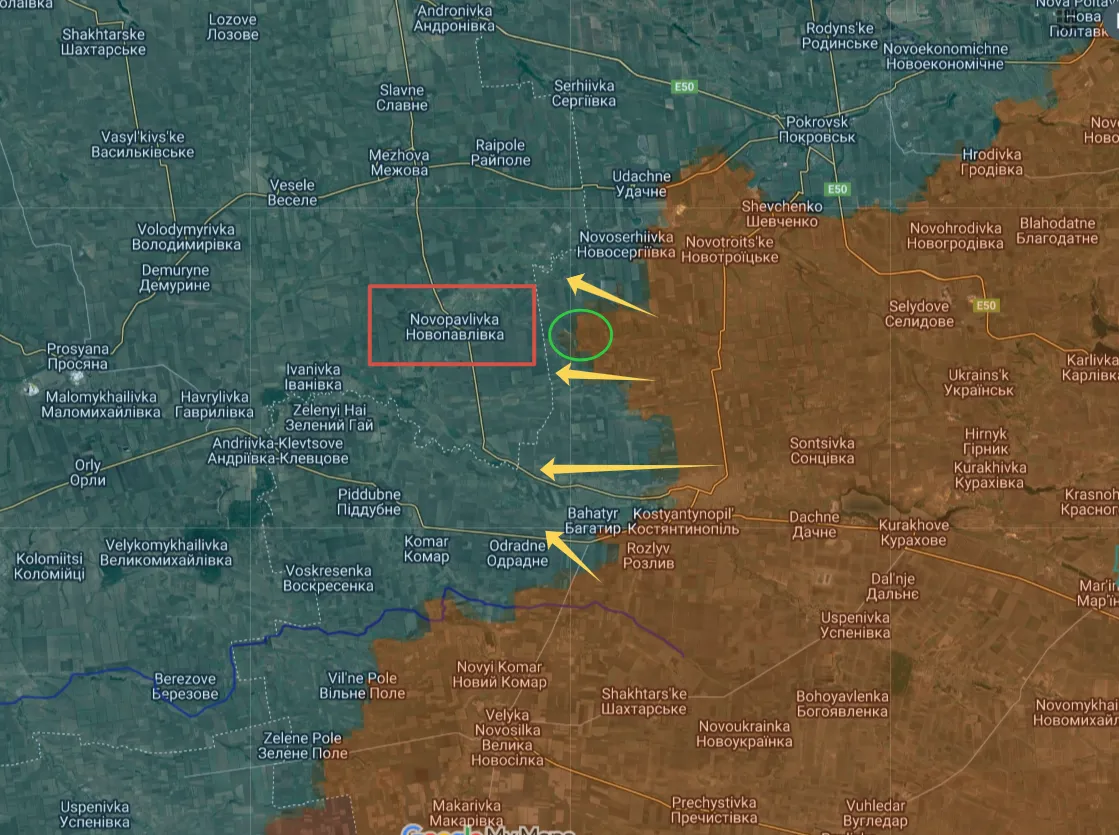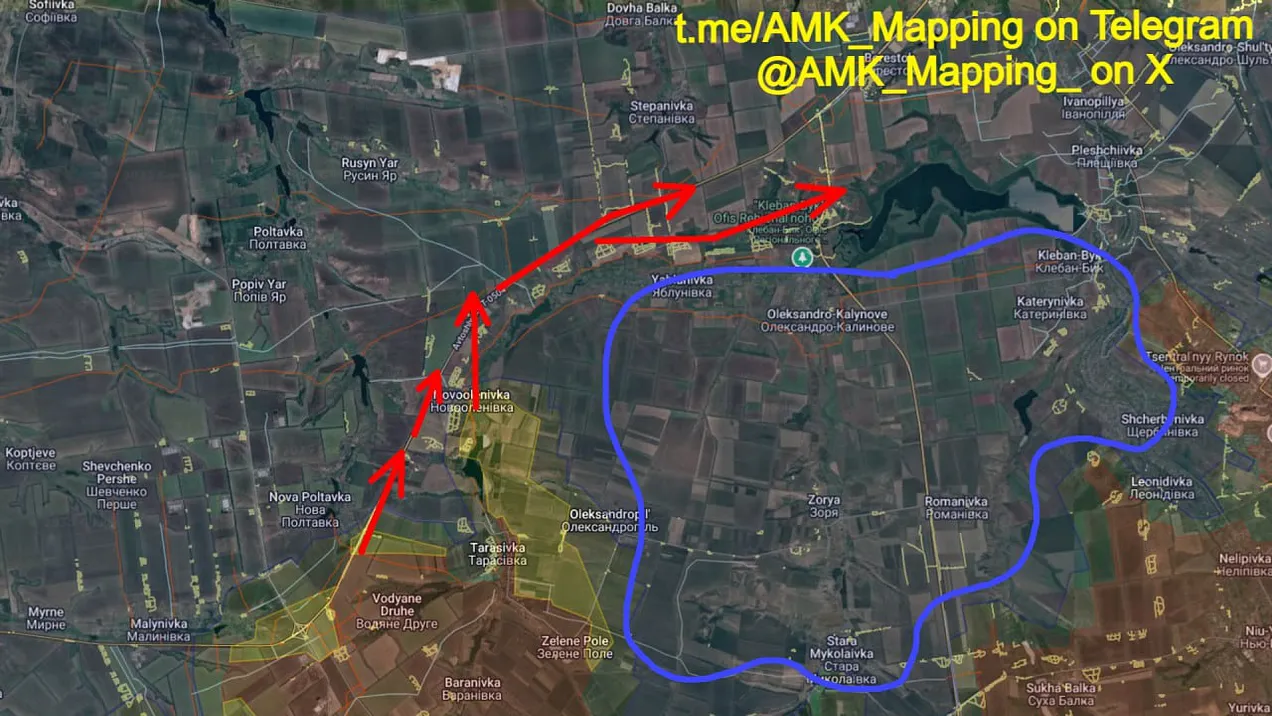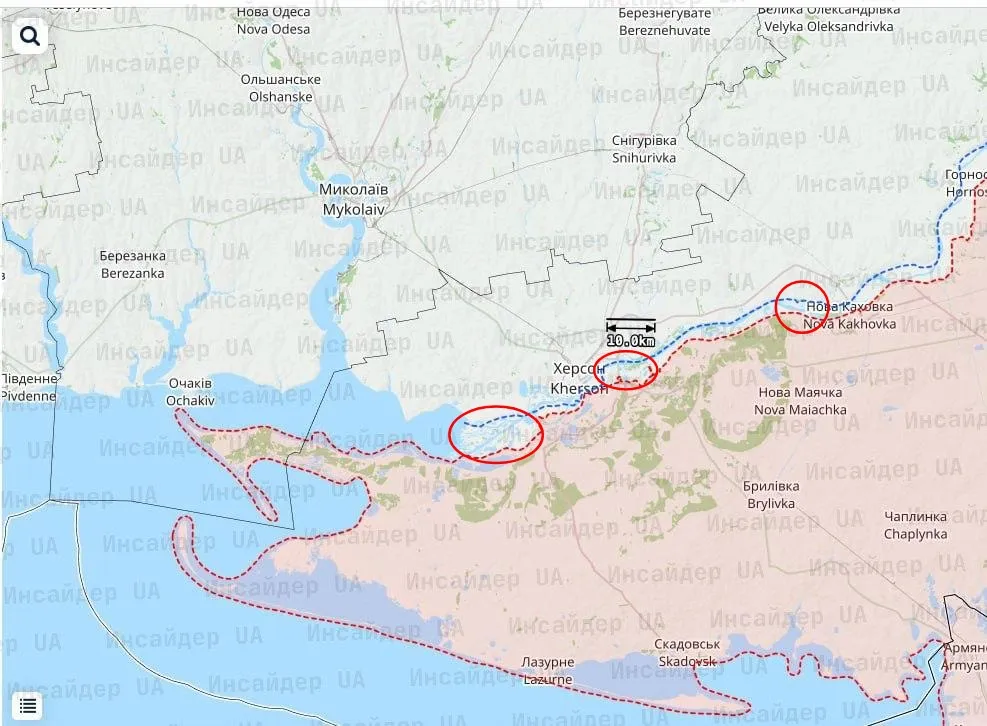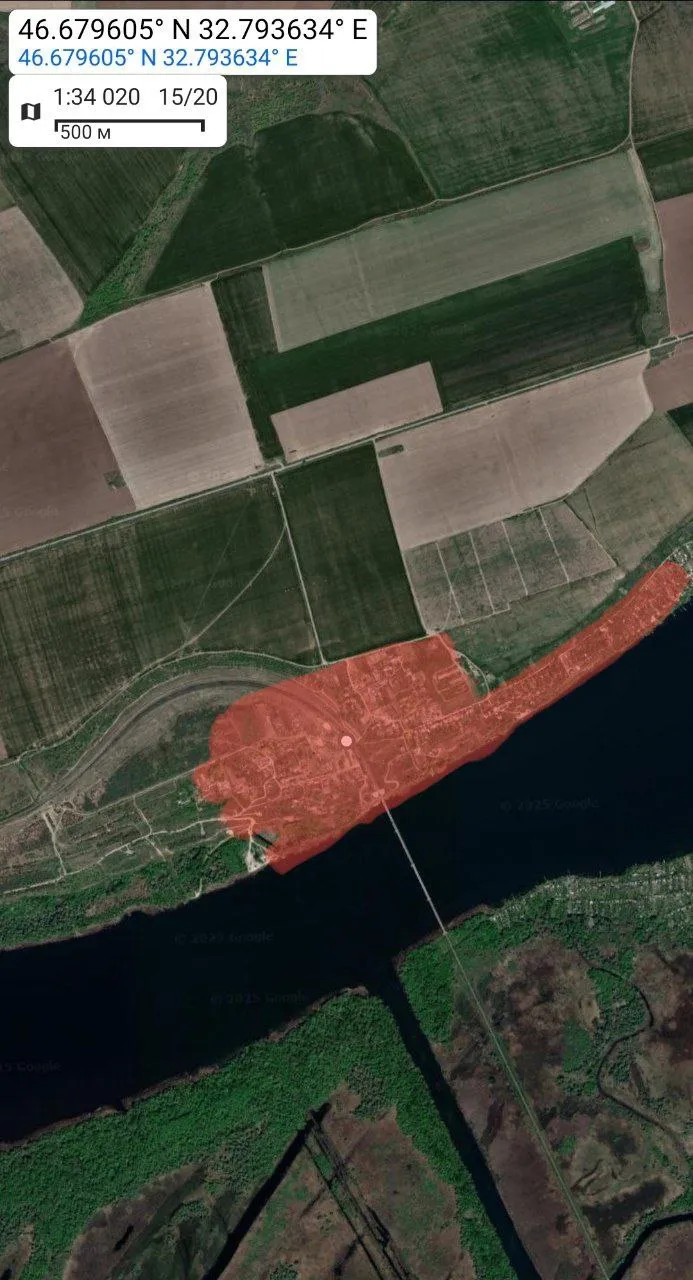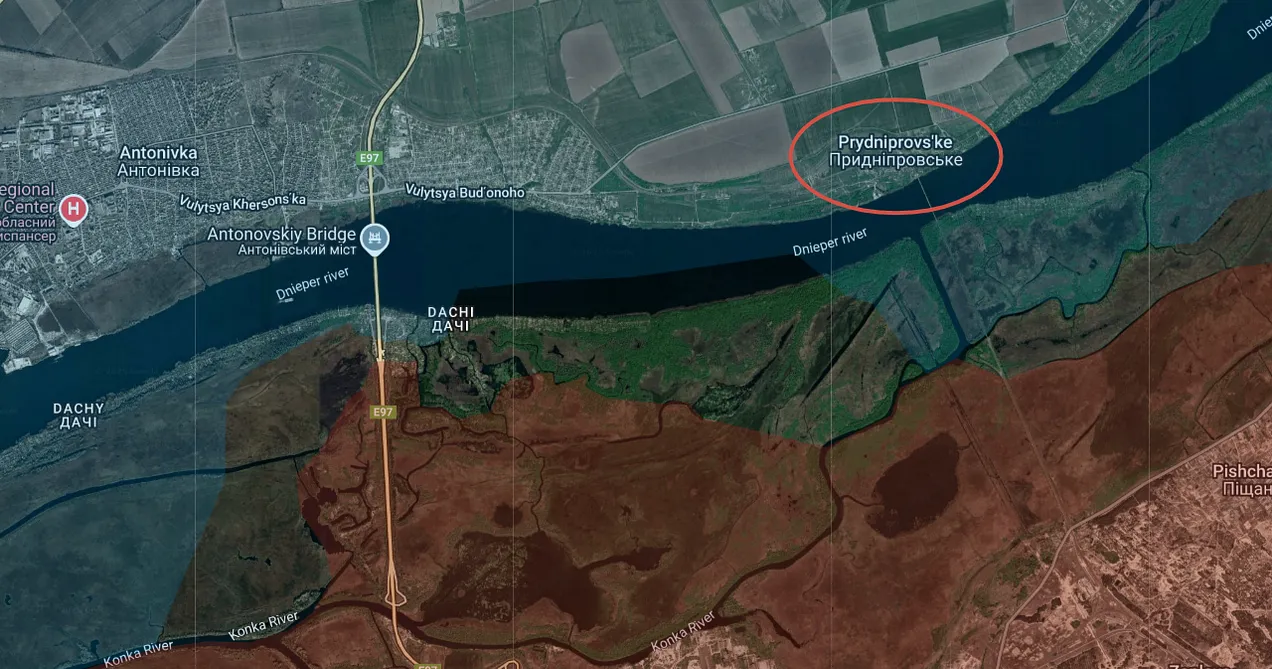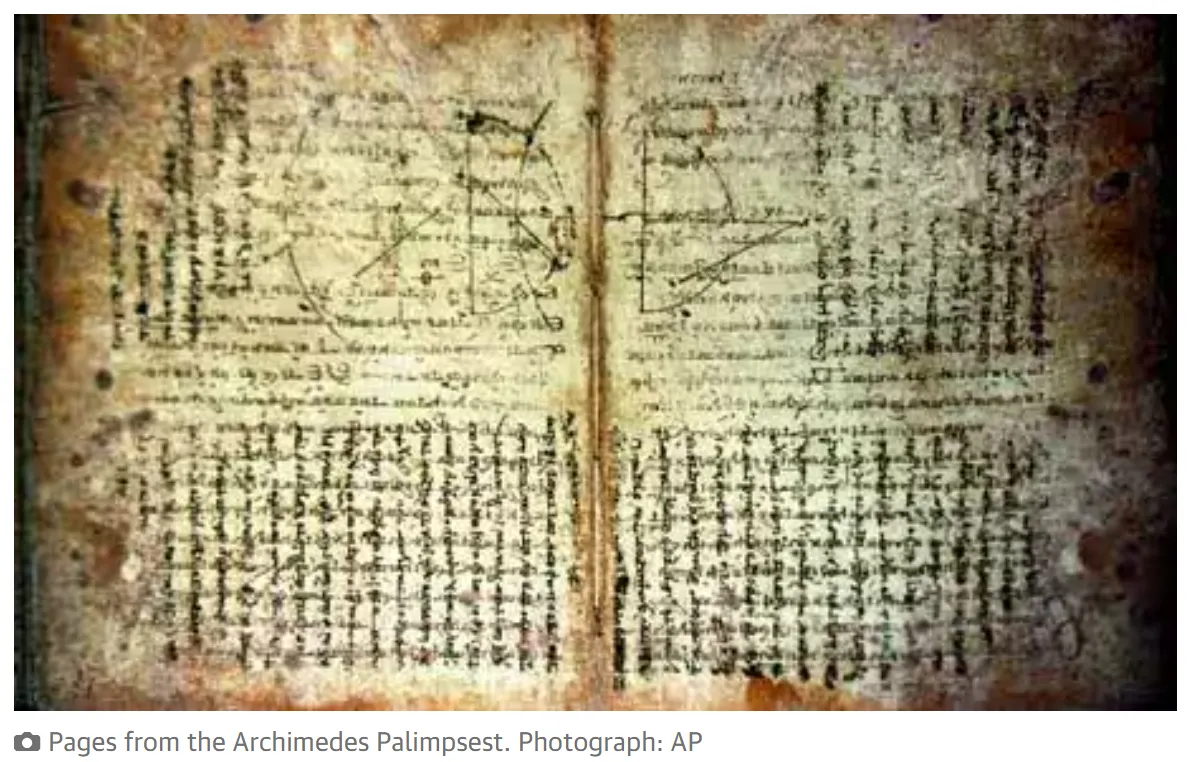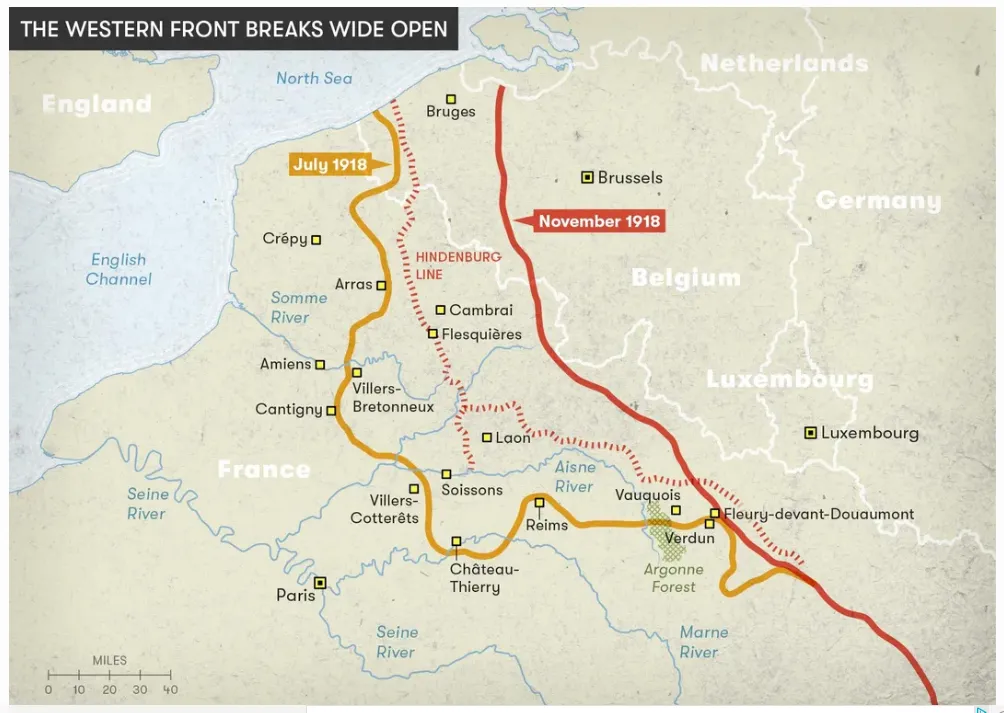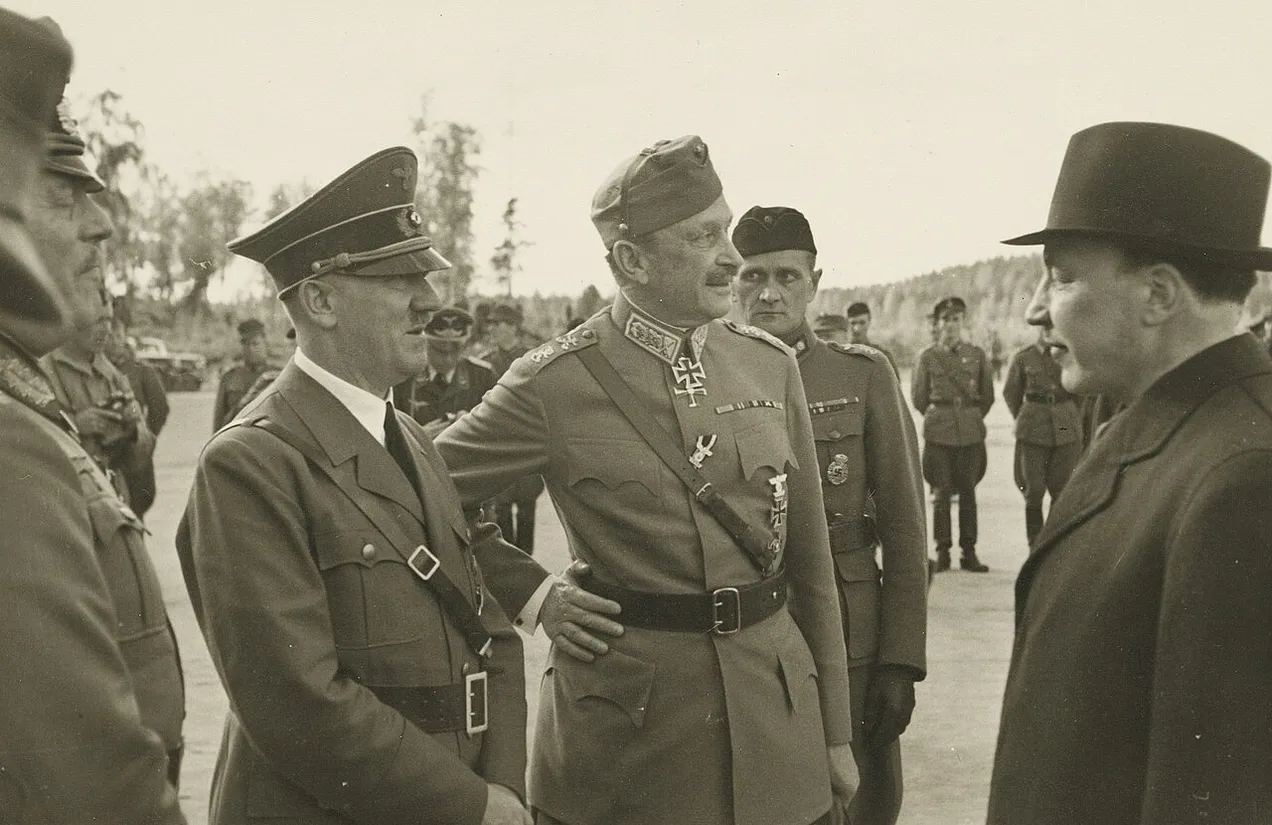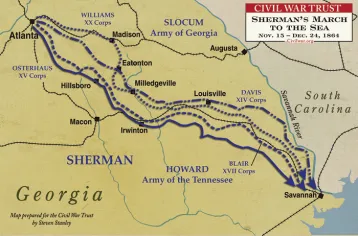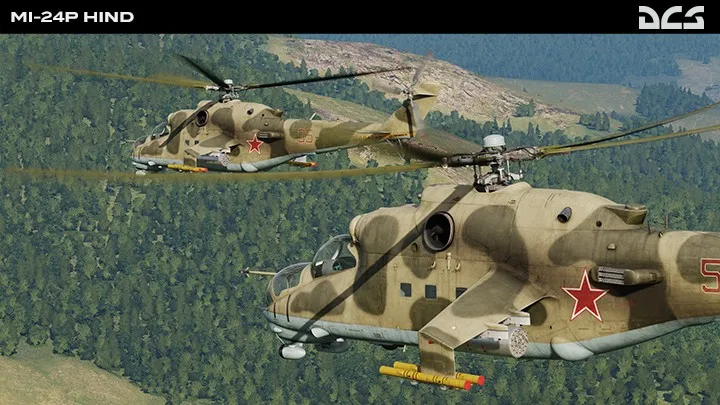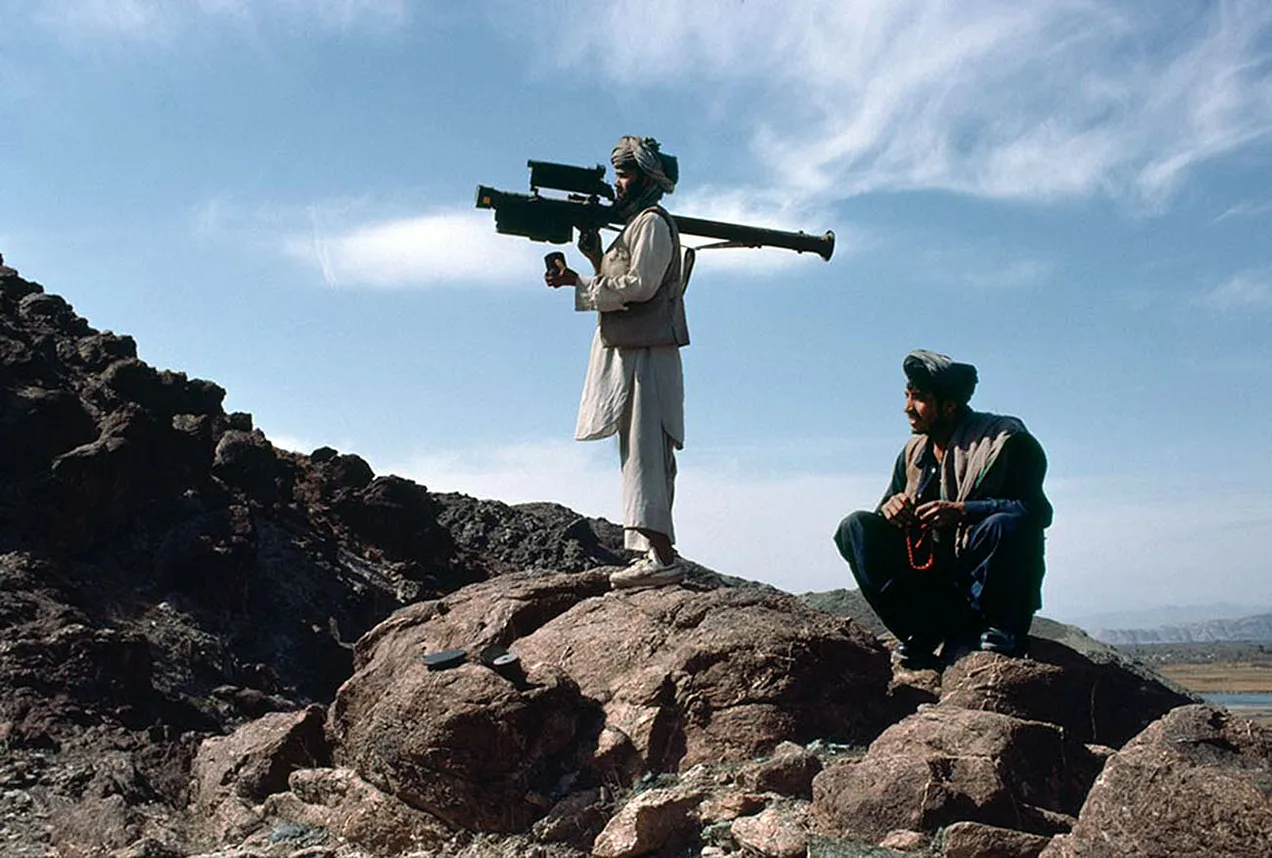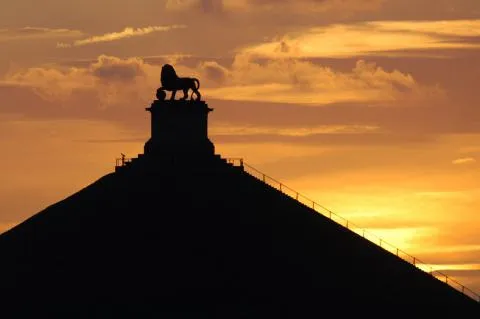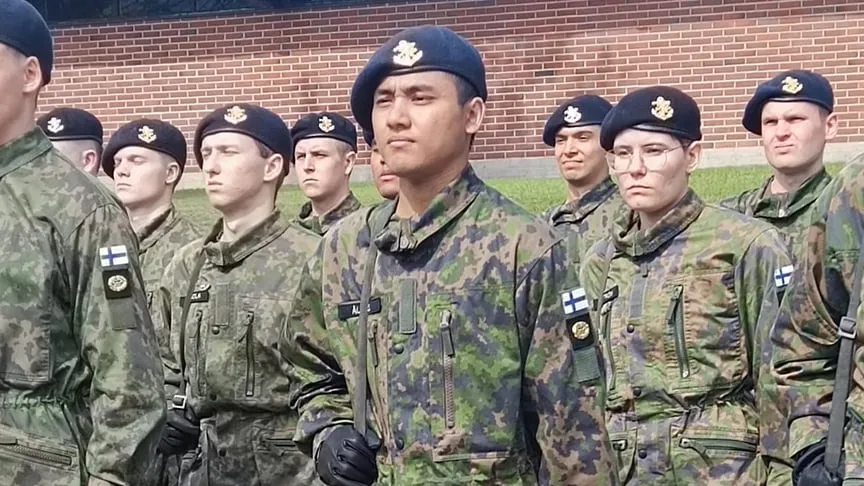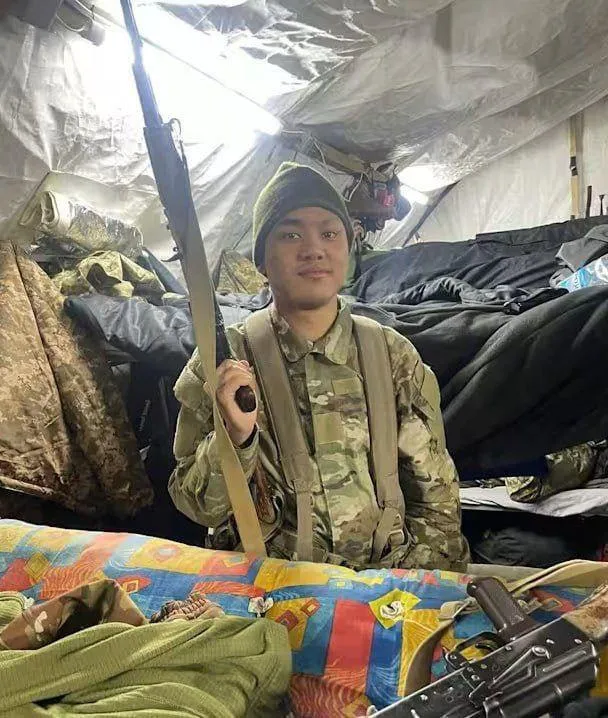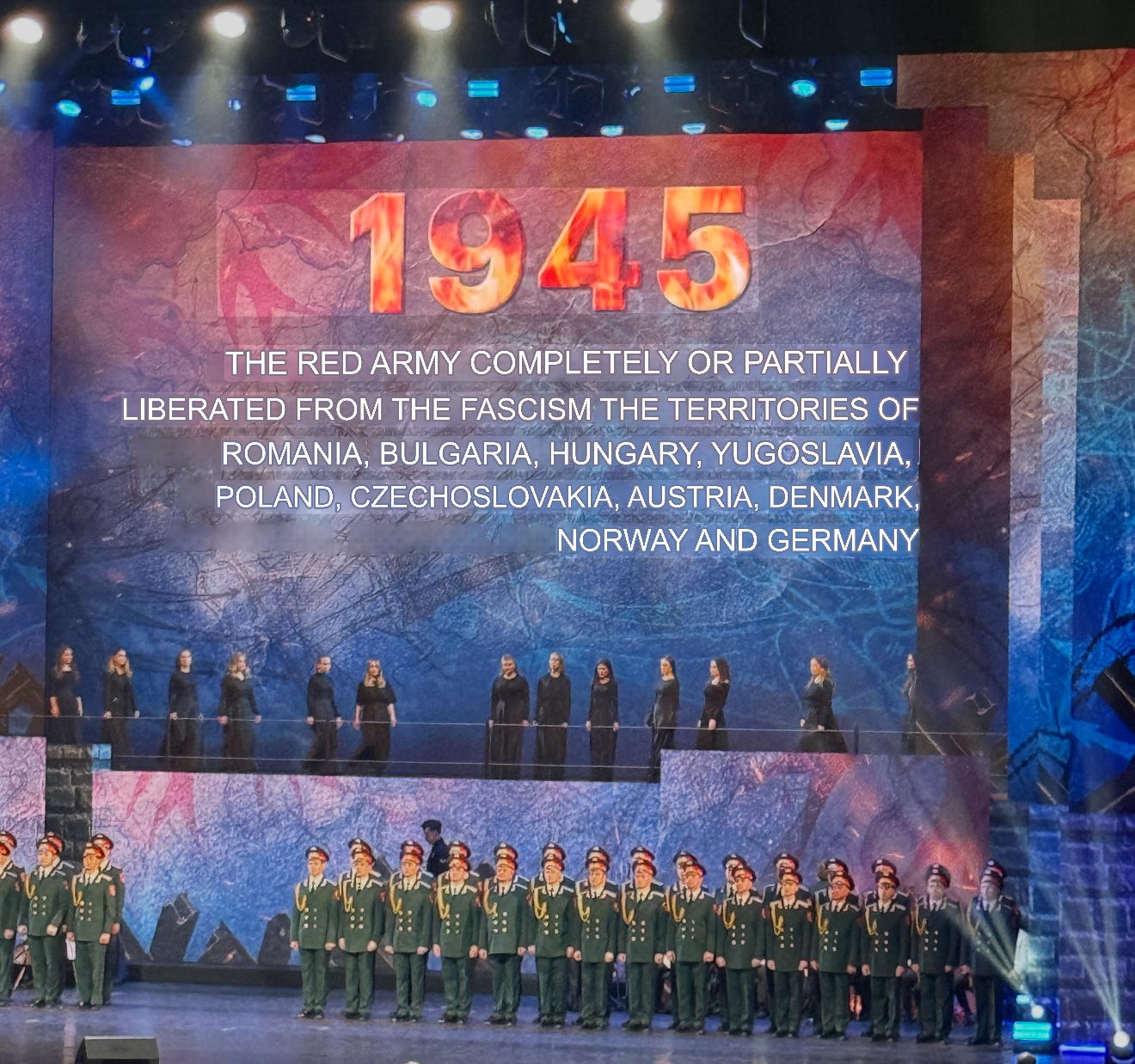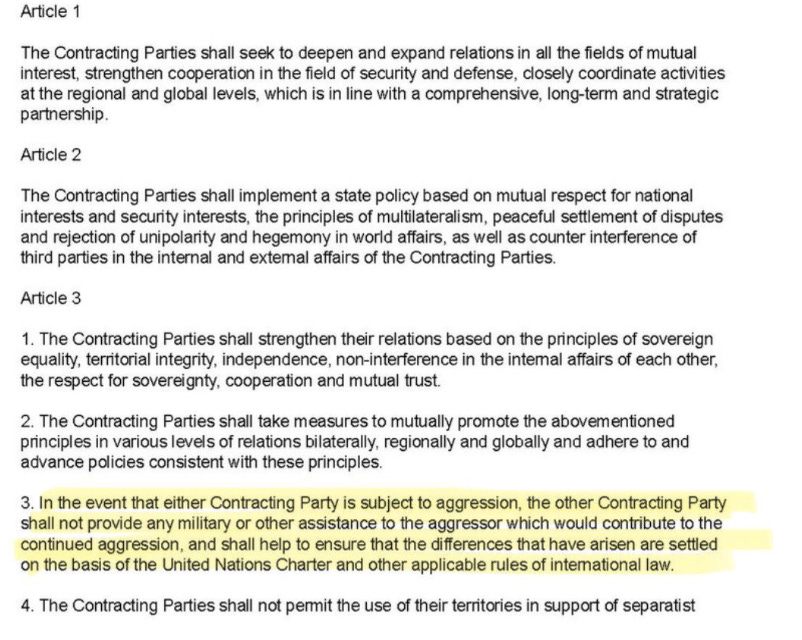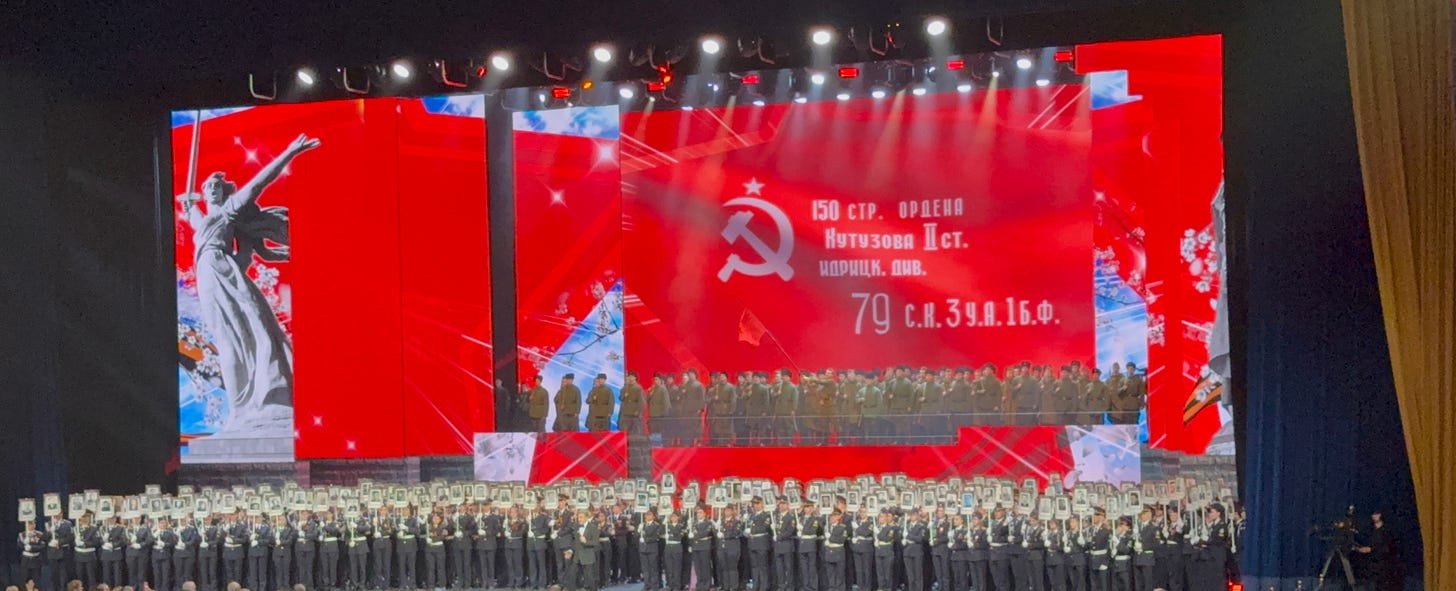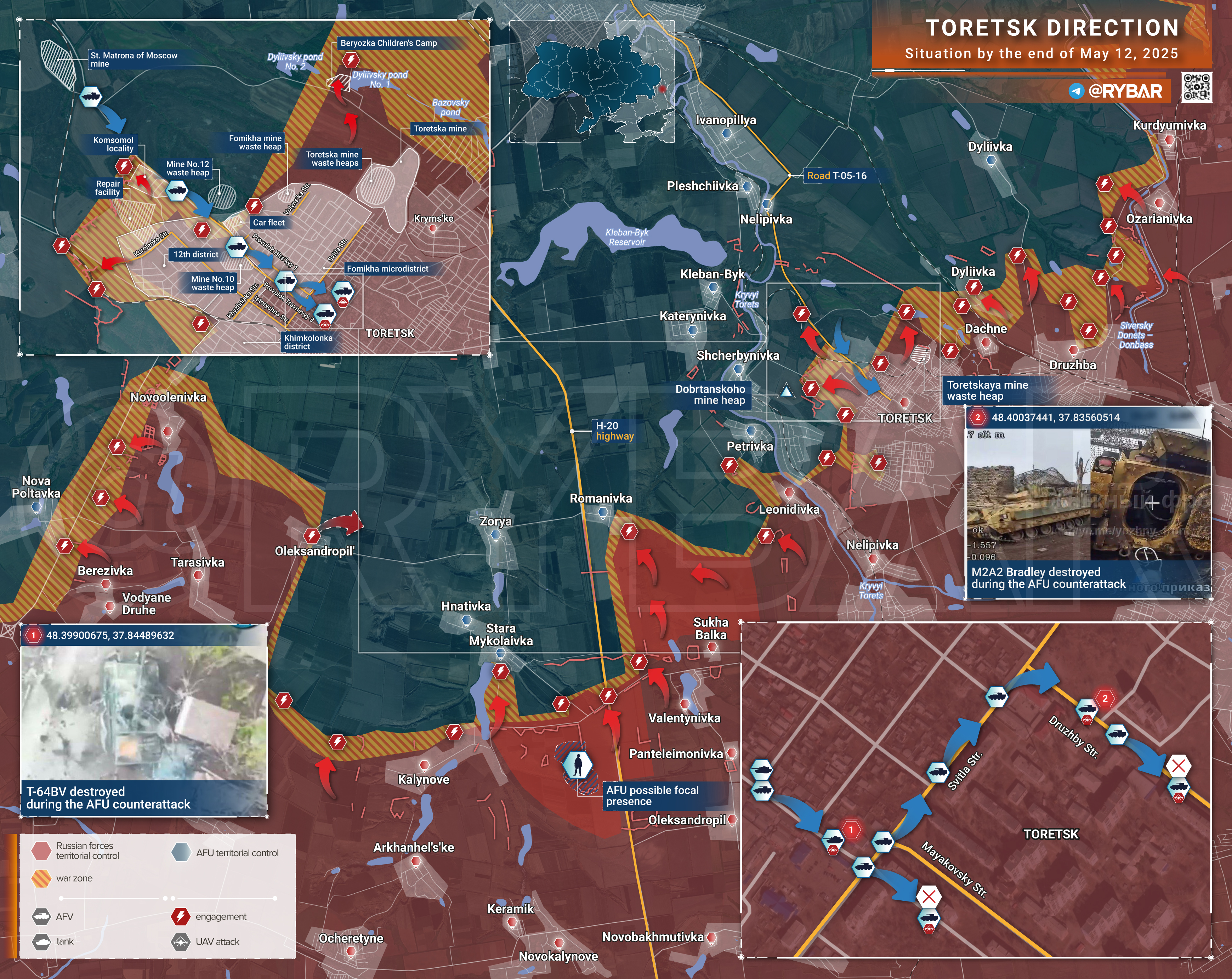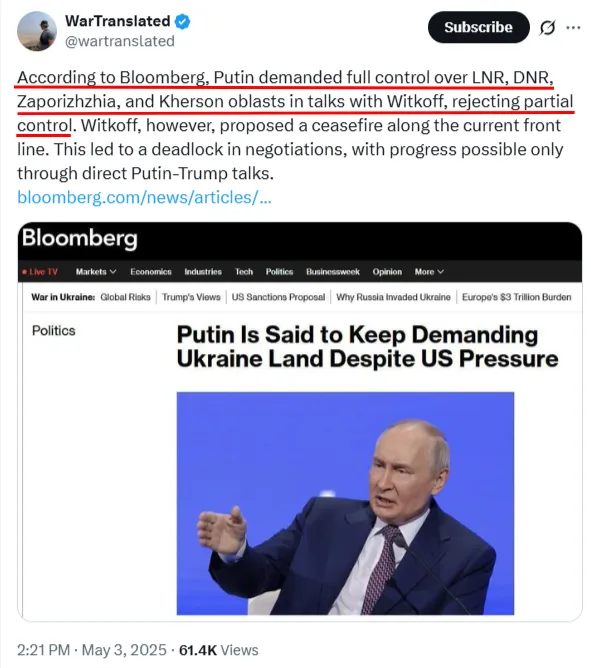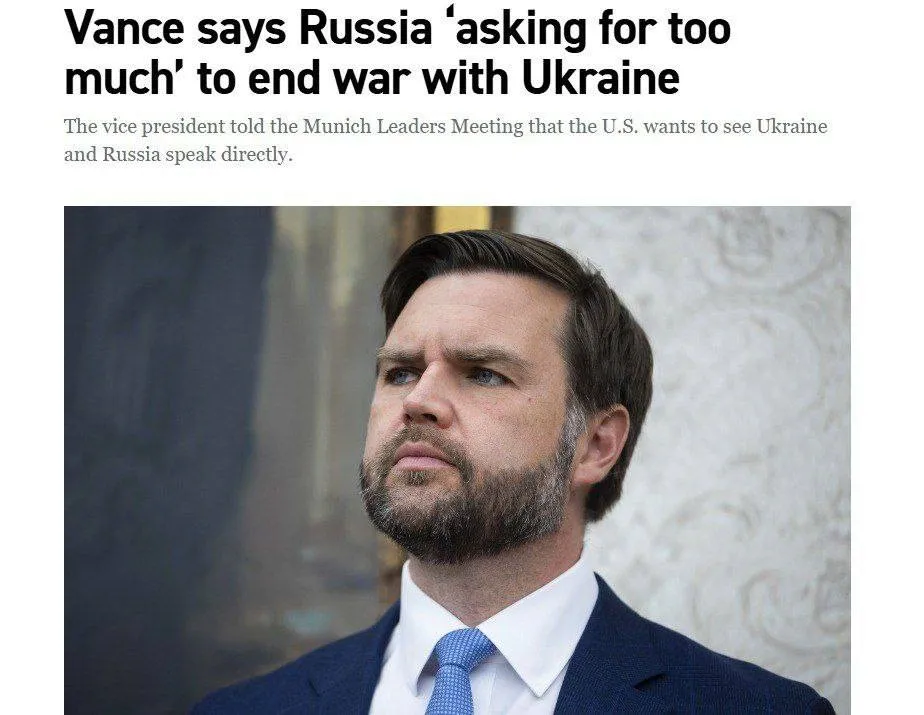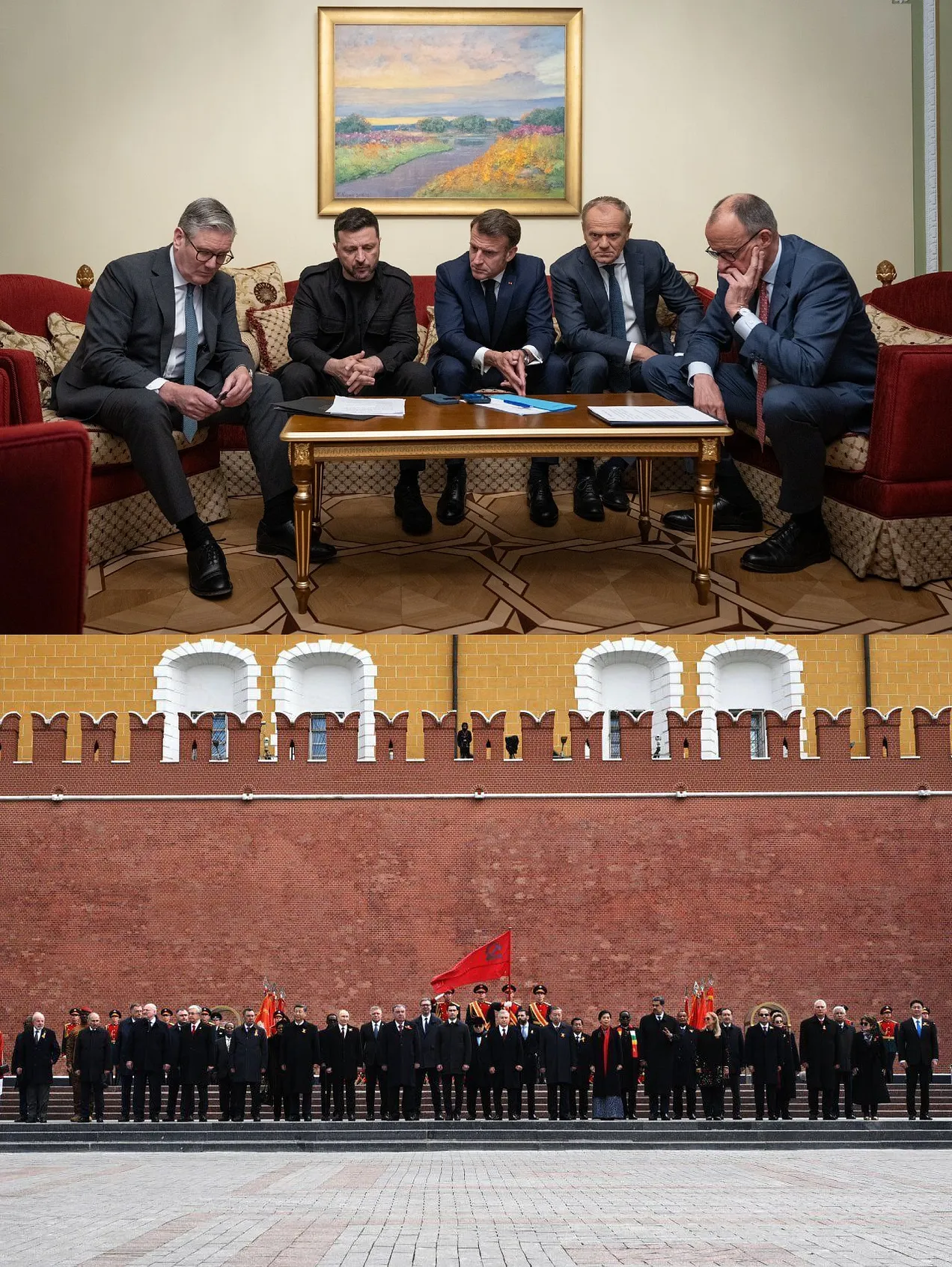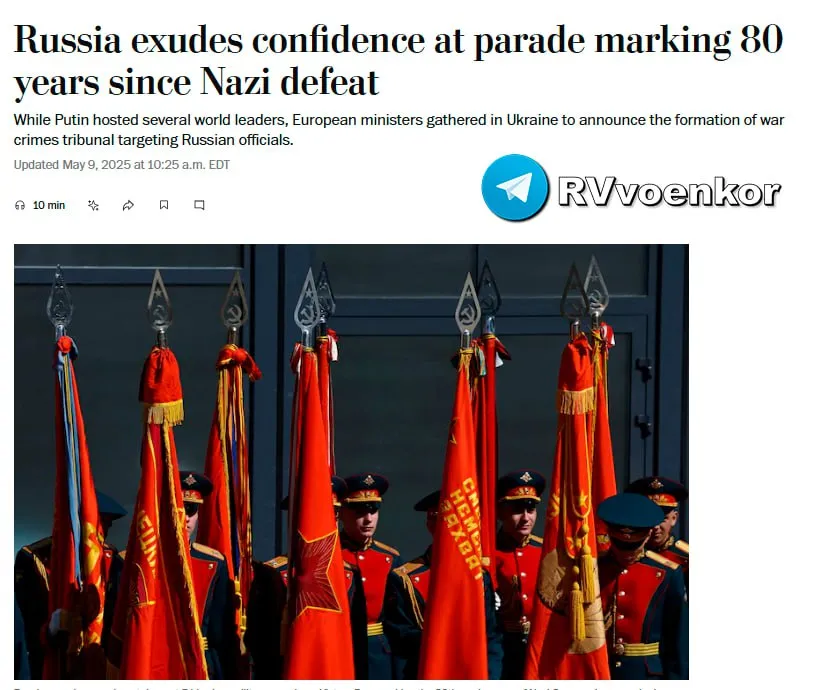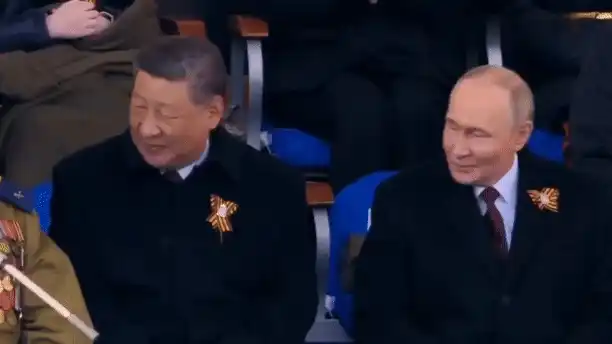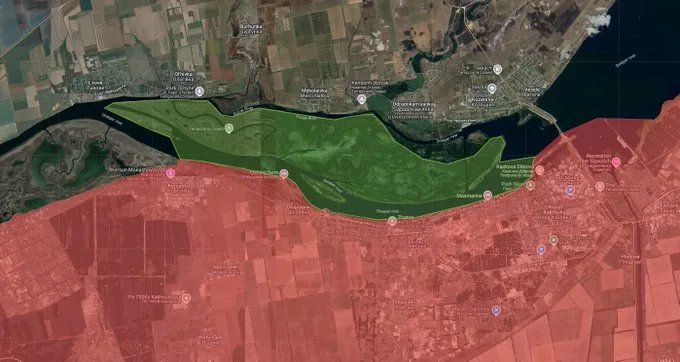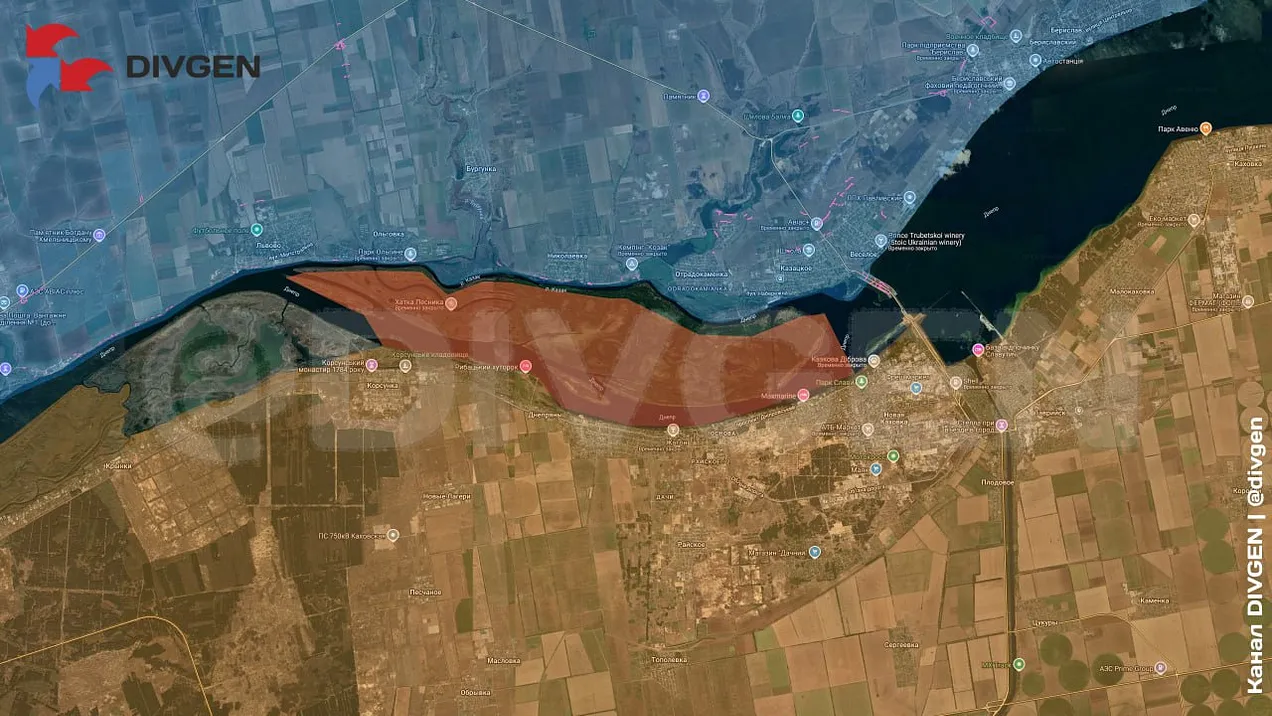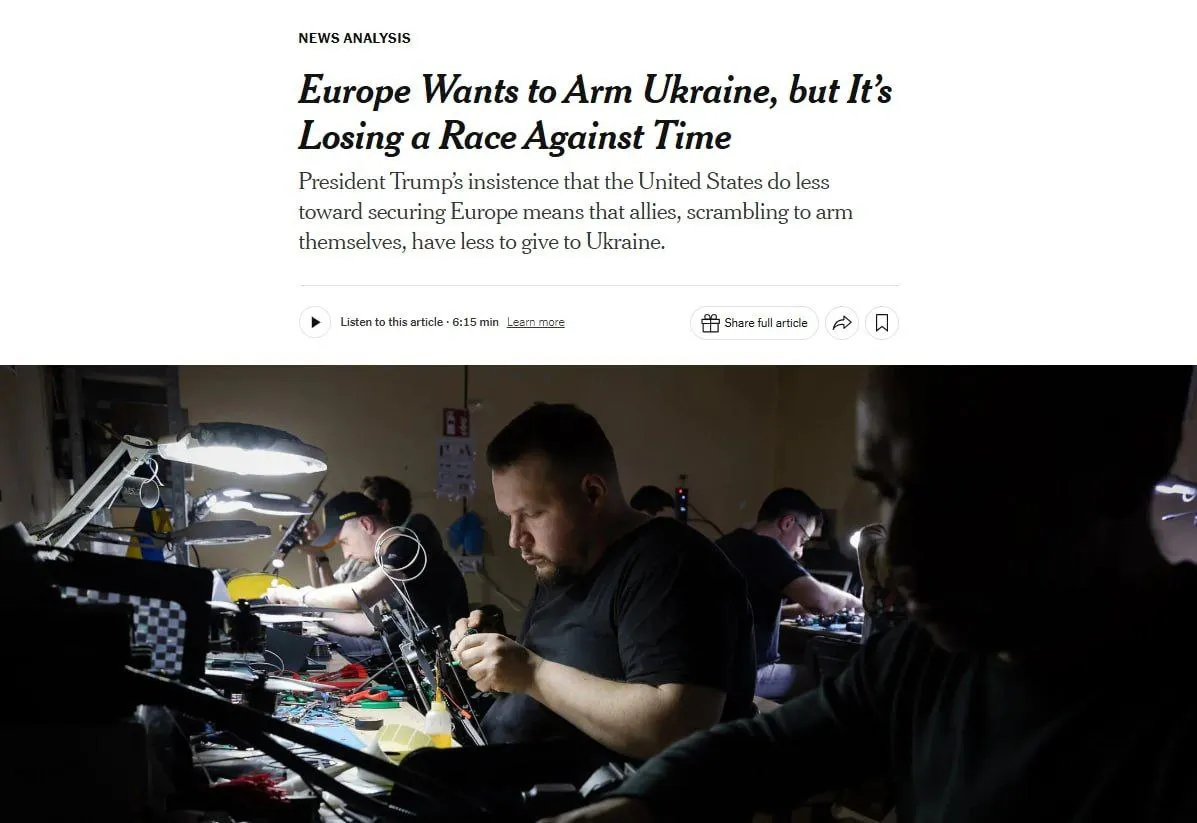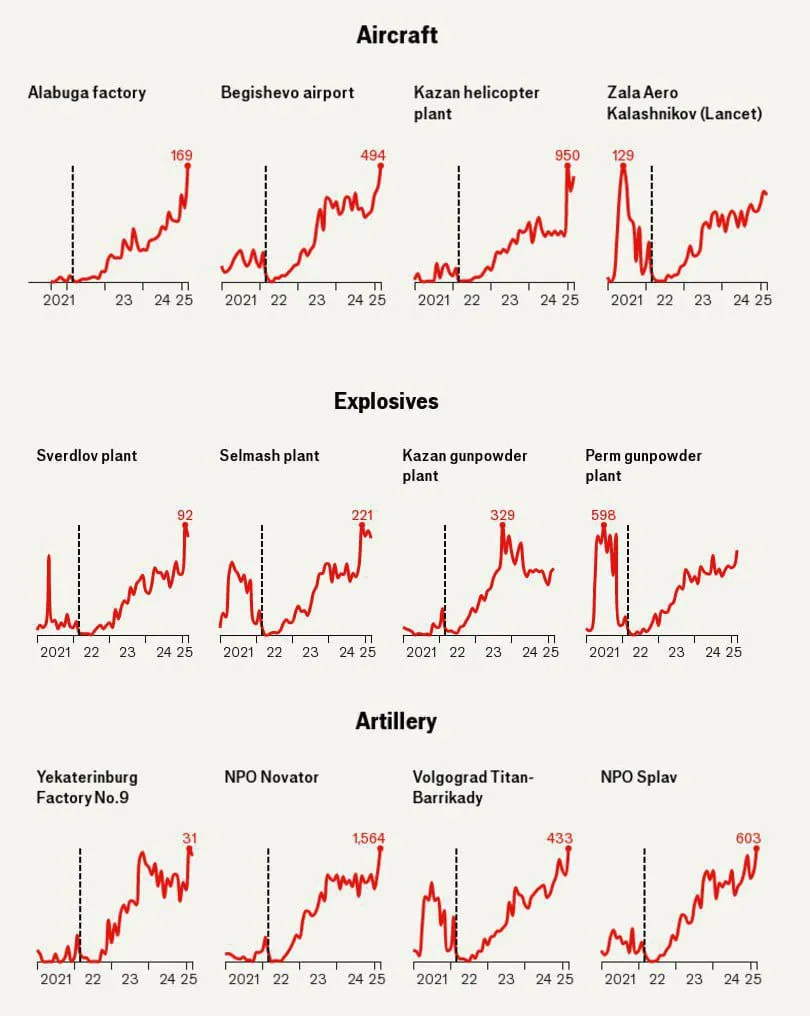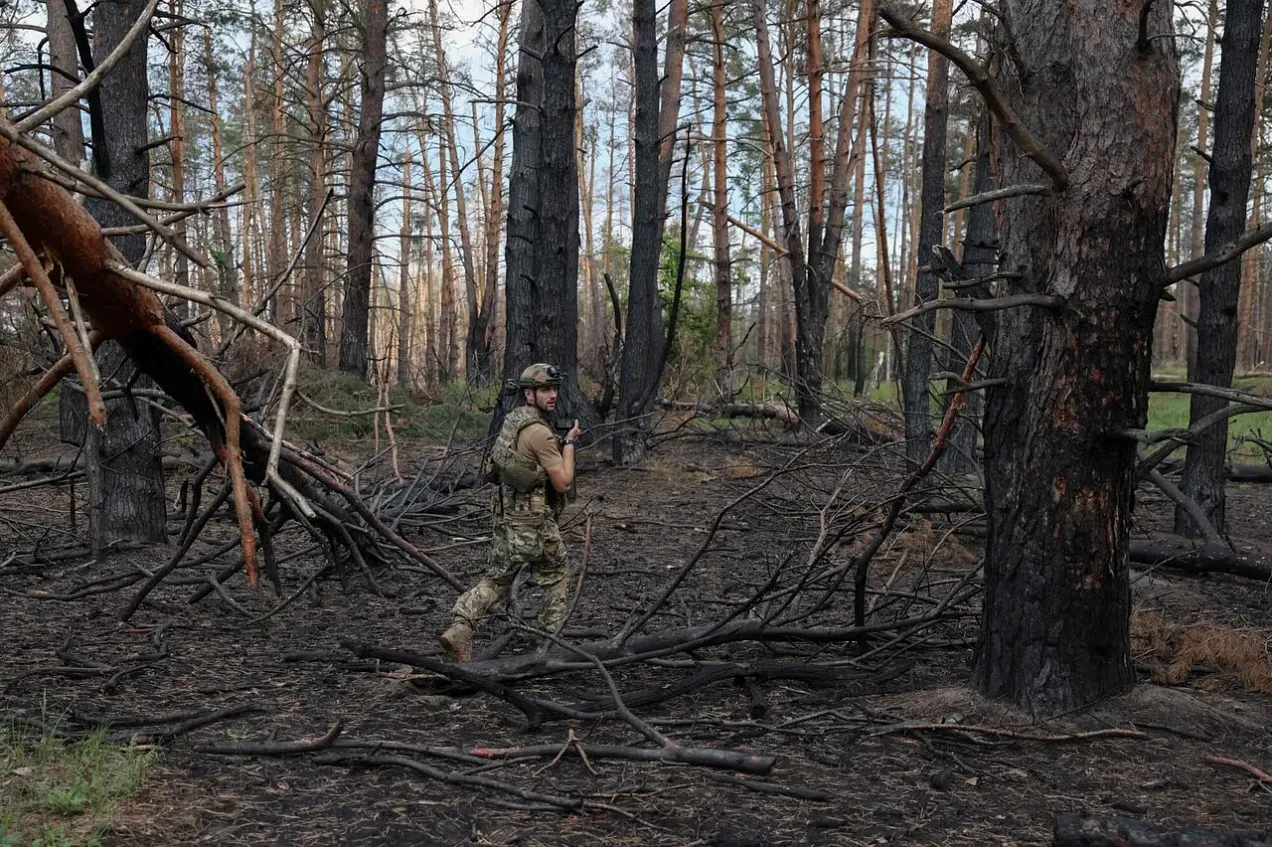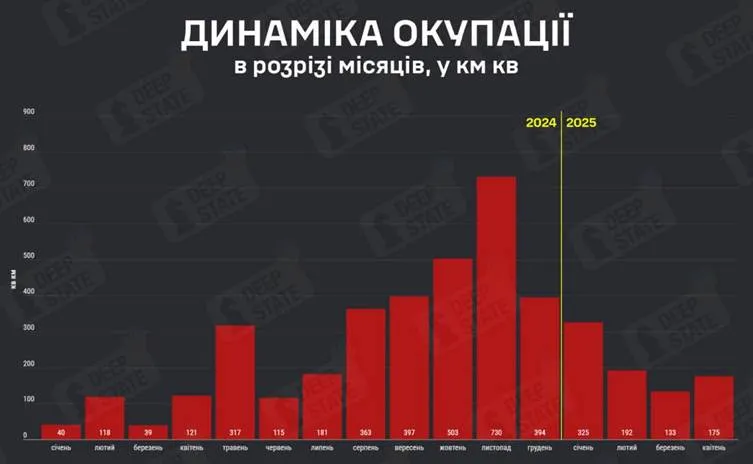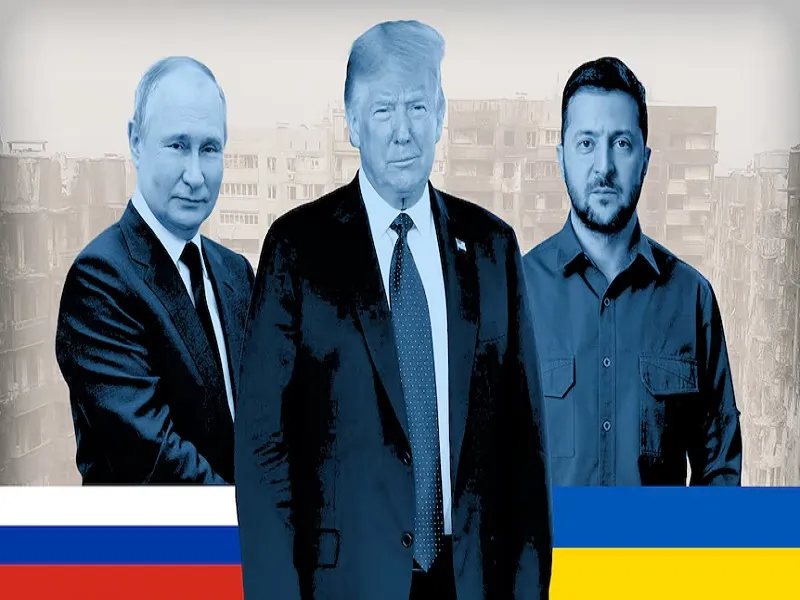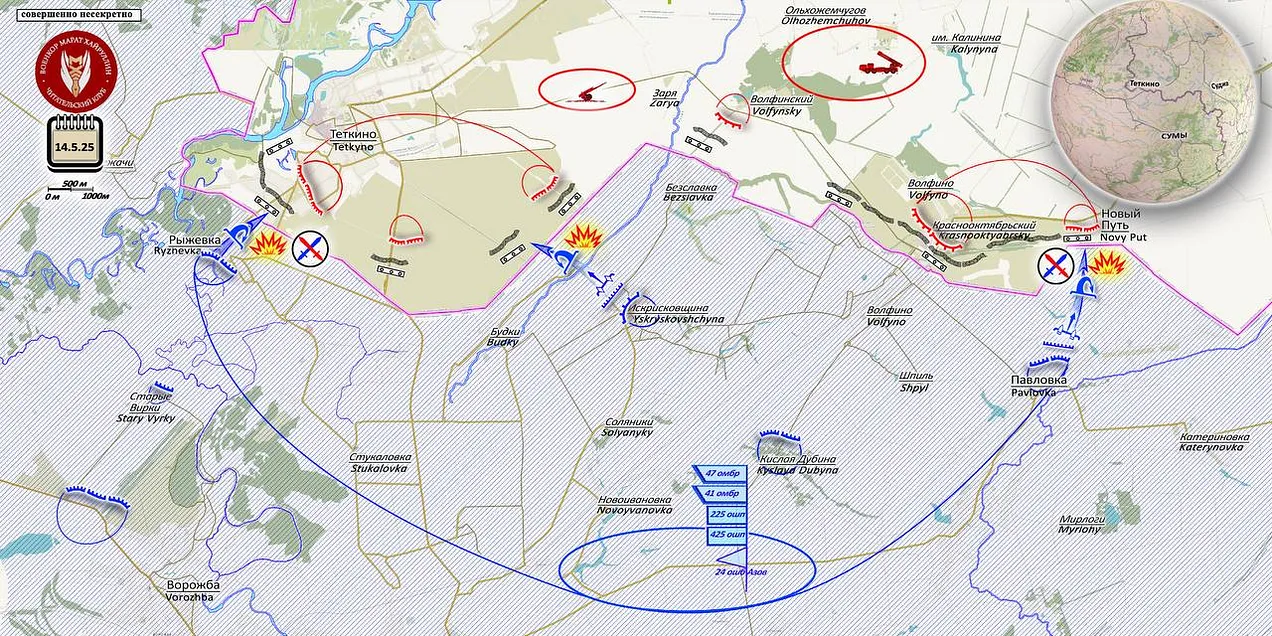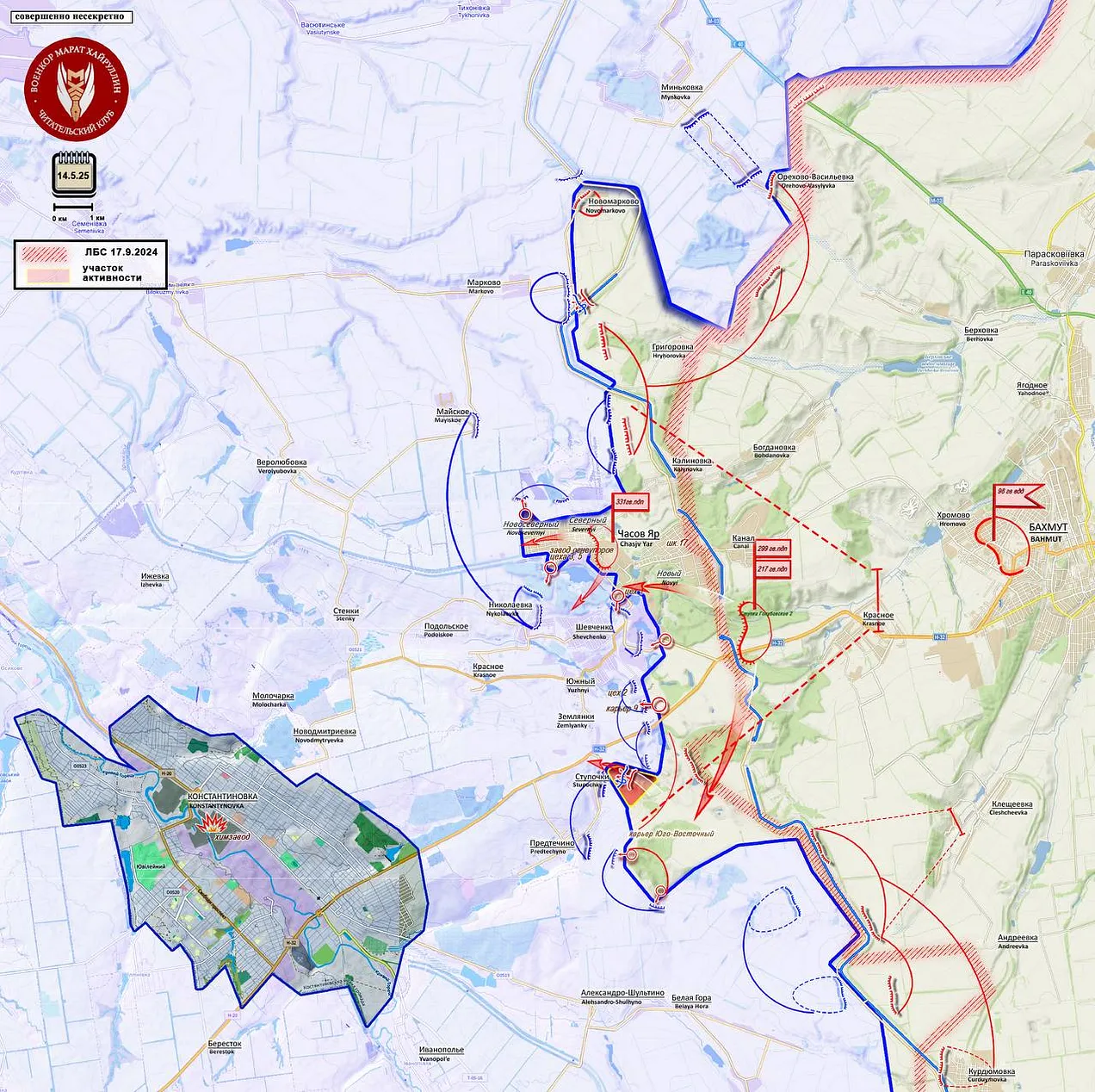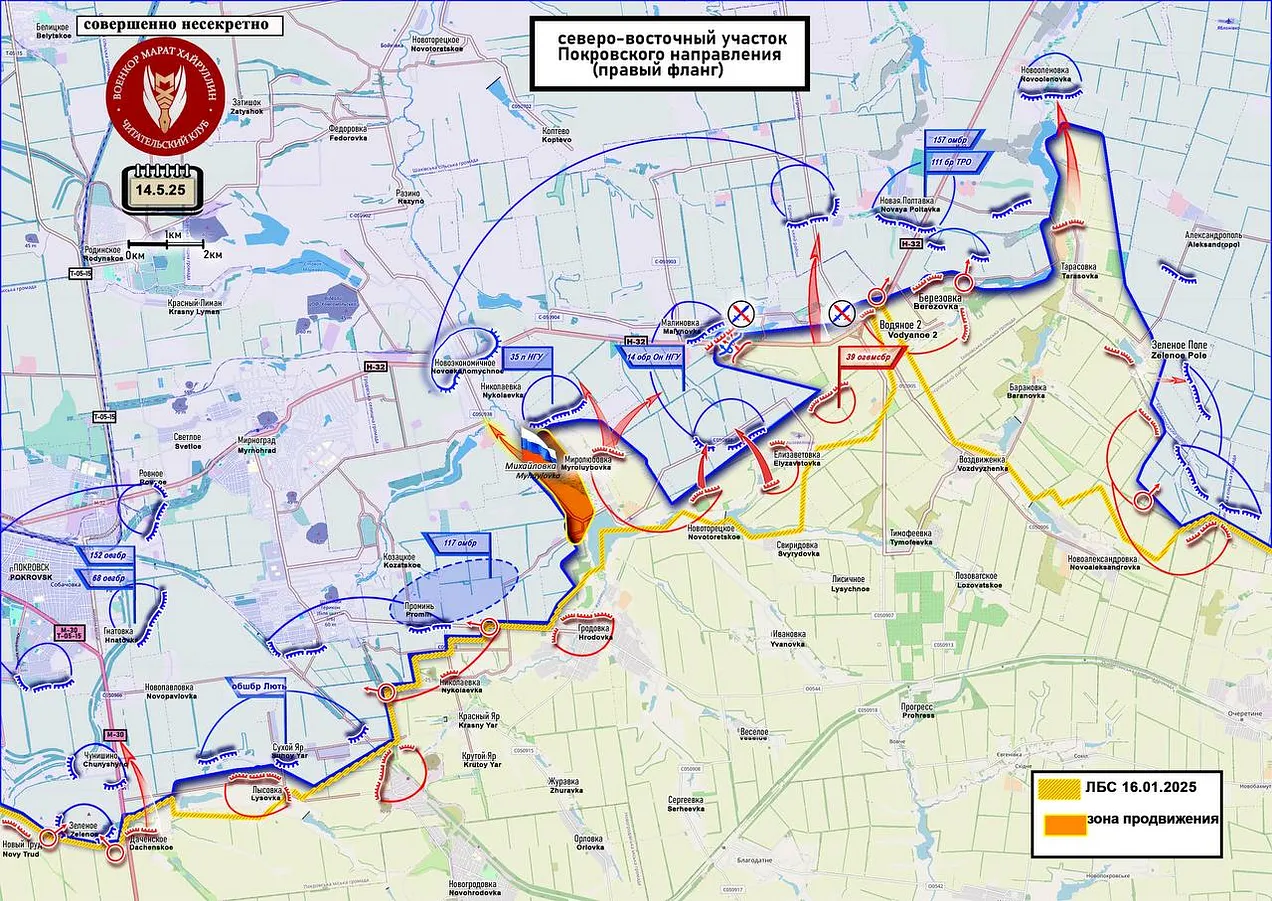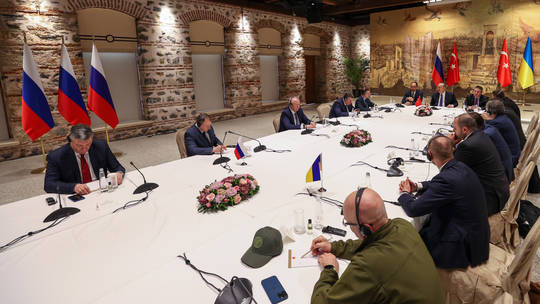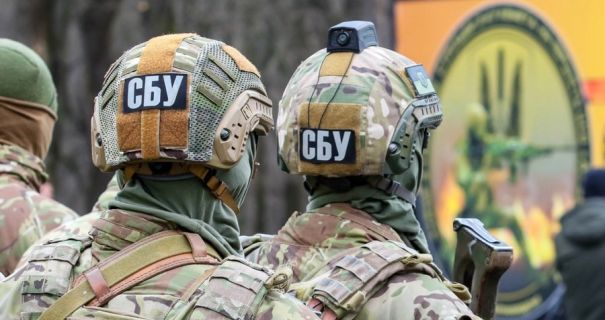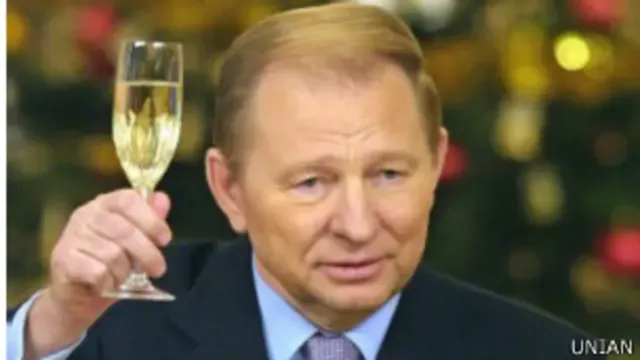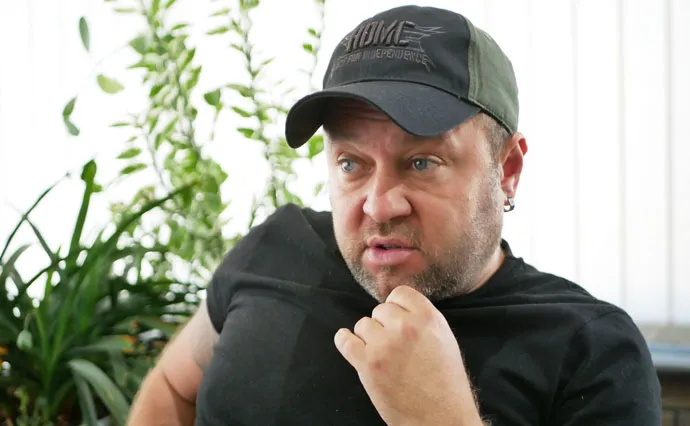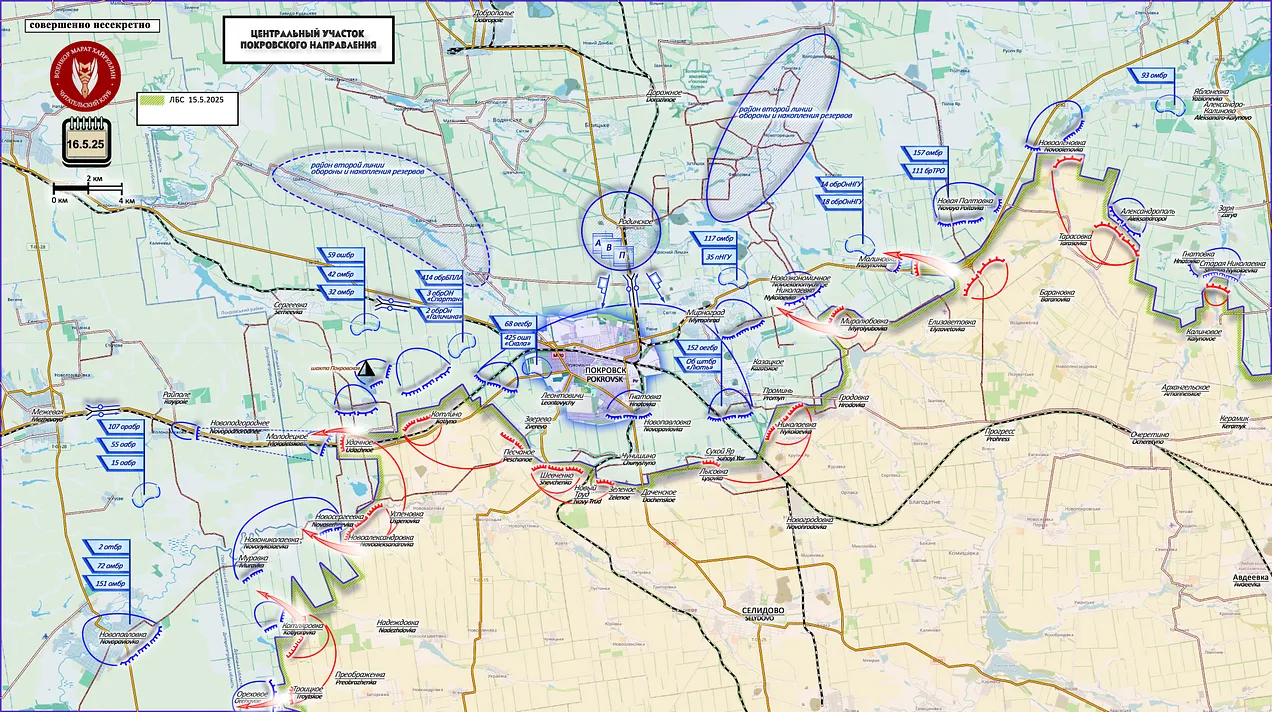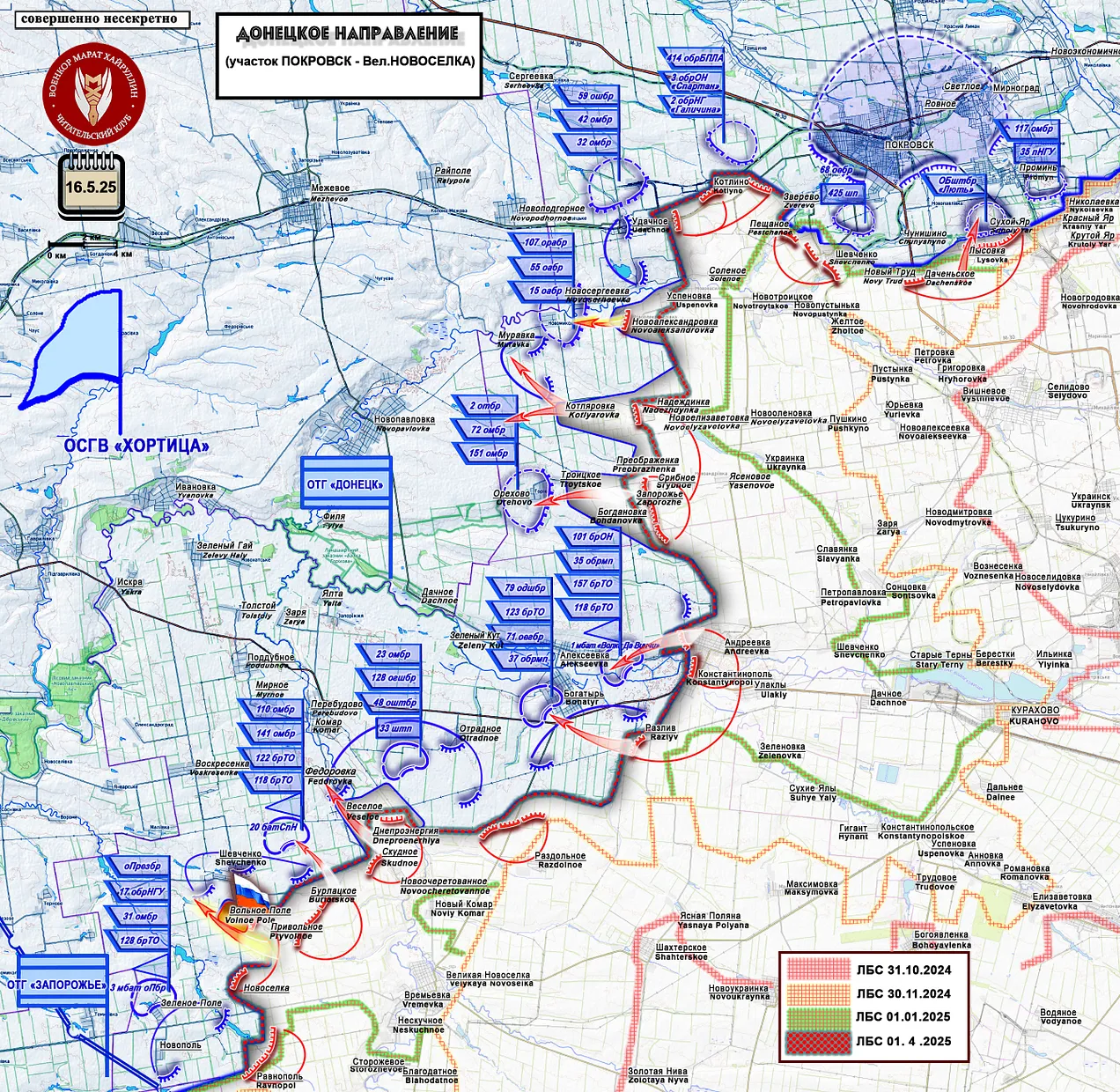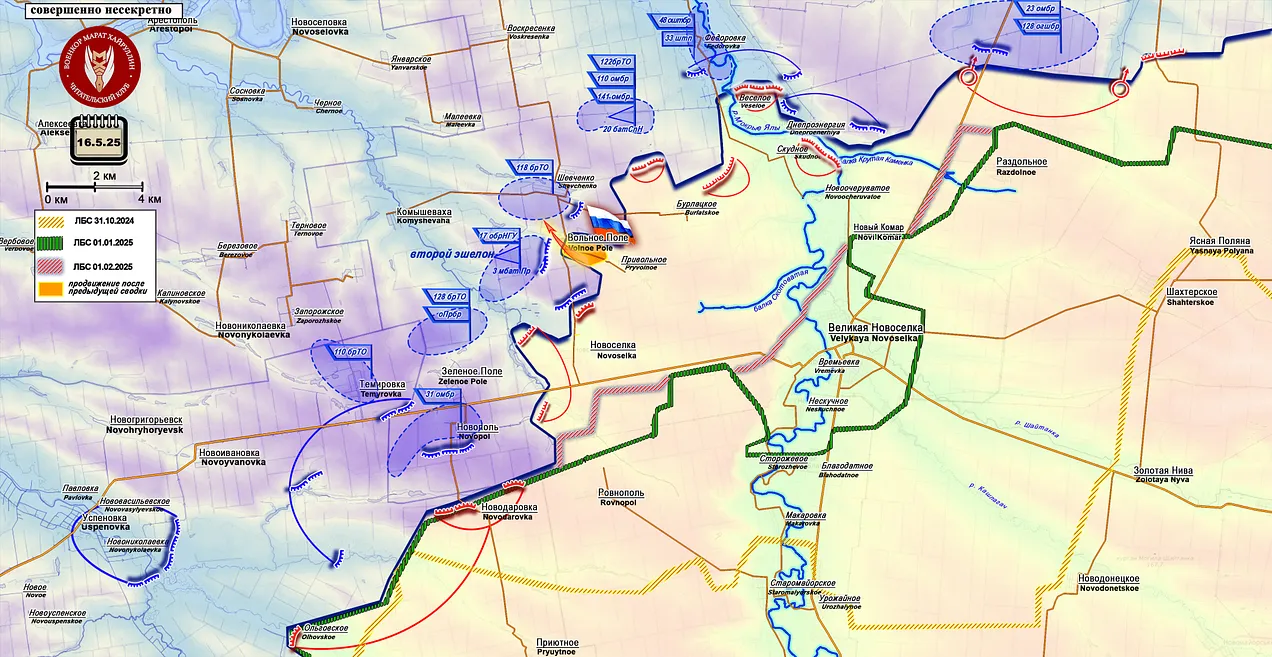Posted by @nsanzo ⋅ 08/05/2025

The war in Ukraine is currently in a strange limbo between Donald Trump's claims that an agreement is closer and that he will be the man who made it possible, and the day-to-day reality, always with the appearance of perpetually rising tensions. On the one hand, VE Day is an opportune moment to reduce tensions, to claim, each country in its own way—often explicitly denouncing the actions of the other side—the victory of World War II, which, despite the current rhetoric, was shared. But the week is also conducive to political confrontation. Curiously, unlike other years, Ukraine has chosen this time to claim its role in that war, whose symbols it has banned by law. “Ukraine paid a devastating price in World War II: 5 million civilians died and 3 million soldiers gave their lives fighting. The role of Ukrainians in defeating Nazism was crucial, yet often overlooked. Let us remember the true history of World War II and honor those who fought for freedom,” the Ukrainian Ministry of Foreign Affairs wrote yesterday, accompanying a wartime image with the new symbol used to celebrate victory, the British-style poppy, in front of the Victory Banner, which will dominate the Moscow parade on Friday, but which is banned in Ukraine for being too communist and for its ties to the Soviet Union.
That parade has been a source of controversy these days between the most radical sectors of the European Union and those unwilling to completely break with the past. Kaja Kallas had already warned of "consequences" for European leaders who attend the May 9 commemorations in Moscow, a threat especially directed at Alexander Vučić, the president of Serbia, who, despite his attempts to advance European integration, is trying to balance that agenda with the friendly relations Belgrade has traditionally maintained with Moscow. "I'm going even if the sky falls on my shoulders," he stated last week, after receiving a veiled threat that Serbia's accession to the EU could be jeopardized by the trip to Moscow. Yesterday, the Baltic countries announced that they would close their airspace to aircraft bound for the Russian capital, citing the political—or politically incorrect—purpose of the trip. The veto affected not only the Serbian president, who was forced to make an emergency landing in Azerbaijan, but also Robert Fico, who had confirmed his attendance despite threats from the head of European Union diplomacy .
To these political warnings and logistical threats must be added the saber-rattling from Ukraine, which has been joined not only by nationalist battalions but also by Zelensky himself, who seized on the idea of the three-day truce announced by Vladimir Putin to claim that the Russian president is terrified of the possibility of Kiev attacking what he considers a legitimate military target. Last week, the Ukrainian president insisted he could not "guarantee the safety" of the parade guests, an obvious threat that Zelensky camouflaged by suggesting the possibility of a Kremlin false flag . The strategy of tension is clear, although hopefully it will not extend to the dream of bombing the Kremlin during the Victory Day parade. No one in their right mind would attack an event in which the head of state of the world's second-largest power, Xi Jinping, is participating.
However, Ukraine is taking advantage of the hours leading up to a day that much of the Russian population considers one of the most important of the year and is making a special effort to attack the vicinity of Moscow with drones in the hours leading up to the ceasefire announced by Vladimir Putin, which was scheduled to begin tomorrow. Yesterday, hundreds of Ukrainian drones attacked several Russian regions, including Moscow, as they had done 24 hours earlier, always without major military targets and with the aim of intimidating. kyiv also attempted to attack the Russian Black Sea Fleet using at least five Neptune missiles launched from Odessa towards Novorossiysk. All of them were shot down near Crimea.
Frightening the population, attempting to reduce the presence of foreign political authorities, and delegitimizing the May 9 parade is Ukraine's primary mission this week. "In two days, they will celebrate their imaginary 'lone victory' in World War II, forgetting that nearly 7 million Ukrainians gave their lives fighting against Nazism. In Red Square, troops and pieces of Russian military equipment will parade, only to be sent after the spectacle to kill Ukrainians, seize our land, and steal our resources. Just as the Nazis did in 1941," wrote Mikhail Podolyak, one of the leading exponents of the movement to mark a complete break with Russia, renounce all common symbols, deny the role of the Soviet Union, and claim Ukraine's role above all else. In his aggressive and arrogant line, the advisor to Andriy Ermak, Zelensky's right-hand man, called the parade on the "blood-red square" a "shitshow." In the past, units of the Ukrainian Armed Forces have marched in Red Square alongside Russian troops and those from other former Soviet republics, and on Friday, units from kyiv's main trading partner, China, will do so, among others.
Unlike the rest of the year, when Soviet symbols are avoided, the decoration of Red Square will bear, as on previous occasions, the coat of arms of the Soviet Union and will celebrate a victory so unique that even the films sponsored by the Russian Ministry of Culture in recent years make an effort to show the valor and role of soldiers and units from European and Central Asian republics. As Russian opposition journalist Leonid Ragozin wrote yesterday on social media, referring to Ukraine's insistence that its role in the victory is being overlooked, "It is truly overlooked when World War II monuments are being removed en masse while streets are named after Nazi collaborators." It is not Russia that has erased the role of Ukrainians in the common victory against fascism, but Ukraine that has chosen to erase the symbols of that struggle and promote the glorification of those who fought until final defeat protecting the troops of Nazi Germany.
In this European Union, still searching for its place, generally unaware that its privileged position is a thing of the past, the Ukrainian government plays the role of a star pupil who has quickly understood that claiming its role in the Soviet victory can be achieved by praising those who collaborated with Nazism throughout the year and using the first week of May to blame Russia for having appropriated a success that is not its own. The countries that surrendered barely without a fight, those that stayed on the sidelines, surrendered practically voluntarily, or waited for the two great military powers—first the Soviet Union and then the United States, with the belated opening of a second front—to turn the war around before truly joining the resistance, have for years opted for Europe Day, which explicitly excludes Russia, to make the day a more European commemoration , that is, with fewer red flags. Led by the Baltic countries and Ukraine, this view of the war is not far from that of Donald Trump, who this week wrote on his personal social media account that the United States won that war and that "without the United States, the war would have been won by other countries." Specifically, the Soviet Union. Obscuring that role, and not Ukraine's role as an integral part of the Soviet Union, is the goal of historical revisionism, which for a decade now has not been unique to the Baltic countries but has spread to the entire European Union.
https://slavyangrad.es/2025/05/08/drone ... isionismo/
Google Translator
******
From Cassad's telegram account:
Colonelcassad
SITUATION IN THE SOUTH DONETSK DIRECTION BEFORE THE DECLARED CEASEFIRE
Soldiers from Primorye before the ceasefire:
Artillery crews and FPV drone operators carried out pinpoint strikes on Ukrainian Armed Forces positions.
Destroyed:
3 dugouts;
5 Baba Yaga-type UAVs;
11 quadcopters;
Managed to thwart an attempt by the Ukrainian Armed Forces to reinforce their positions.
Soldiers from Transbaikalia:
Before 23:59 07.05, artillery and FPV drones struck enemy targets in a number of areas:
Destroyed:
1 shelter in the Bogatyr area;
3 temporary deployment points (TDPs) in the Alekseyevka area;
Destroyed 1 pickup truck in the Bogatyr area;
Disabled 2 UAV ground control station antennas in the Alekseyevka area.
By soldiers from the banks of the Amur before midnight:
Destroyed:
Starlink terminal by pinpoint drop from UAV in the Gulyaipole area;
2 UAV control points in the Gulyaipole and Dorozhnyanka areas;
Bunker in the Mirnoye area.
Artillery crews with D-30 mounts suppressed:
2 mortar crews of the Armed Forces of Ukraine north of Dorozhnyanka.
Units of the "Vostok" group, in accordance with the order of the Supreme Commander-in-Chief, have been observing the terms of the temporary ceasefire since 00:00 on May 8. At the moment, it is reported from the scene that the Ukrainian fascists are attempting to provoke. We continue to monitor the situation!
@voin_dv
***
Colonelcassad
The Russian Defense Ministry reported that even before the ceasefire, our attack aircraft managed to liberate Troitskoye on the territory of the DPR as part of the ongoing offensive.
After the ceasefire, relying on Troitskoye, we can continue to advance towards the borders of the DPR. And the next couple of days can be used for rotations and the delivery of ammunition.
The Russian Defense Ministry also reported that despite the declared ceasefire, the enemy attempted to attack on the border of the Kursk region (in the Tetkino area) and in the Dzerzhinsk area. The attacks were repelled. Let me remind you that the declared ceasefire does not prohibit Russian troops from responding to shelling and offensive activity of the enemy. And this activity is being recorded.
Along the entire line of combat contact, Ukrainian units carried out 173 shelling attacks from barrel artillery, tanks and mortars on positions of our troops, as well as 4 using multiple launch rocket systems. In addition, 300 strikes and drops of ammunition from unmanned aerial vehicles were carried out. A total of 488 ceasefire violations have been recorded.
At the same time, in some areas the ceasefire is either still in effect or has reduced the intensity of military action. In fact, the new ceasefire is working in much the same way as the "Easter" one - it works here, it doesn't work there. Mostly, it doesn't work. Of course, no sustainable ceasefire is possible in such a regime. That's why Russia does not agree to a 30-day ceasefire and will continue its offensive operation from the night of May 11. Because Moscow has no illusions about Ukraine. Such "ceasefires" are a tool in negotiations with the Americans.
https://t.me/s/boris_rozhin
Google Translator
******
WHO IS WINKING, WHO IS CAPITULATING – THE NEW PODCAST ON TRUMP’S WARS ON THE FRONT, INSIDE THE PENTAGON, CANADA TOO

By John Helmer @bears_with
As if it wasn’t already clear, the mainstream media led by Reuters, a Russia warfighting propaganda platform based in New York, have just announced that when President Donald Trump says he is for peace with Russia, he is either winking at his Defense Secretary Peter Hegseth or blinking at President Vladimir Putin.
Or else the coordination between the President’s mouth and his eyes fails from time to time and he cannot control his officials, staff, and advisors because they can’t follow when he contradicts himself.
Reporting on a Trump and Pentagon order for the US to halt arms deliveries to Ukraine, through the Polish hub at Rzeszow, and then retraction of the order and resumption of the delivery flights, Reuters says infighting is rife within the White House and the Pentagon, and that either Trump is unaware or he is unable to control it.
“The cancelations,” according to Reuters, “came after Trump wrapped up a January 30 Oval Office meeting about Ukraine that included Hegseth and other top national security officials, according to three sources familiar with the situation. During the meeting, the idea of stopping Ukraine aid came up, said two people with knowledge of the meeting, but the president issued no instruction to stop aid to Ukraine. The president was unaware of Hegseth’s order, as were other top national security officials in the meeting, according to two sources briefed on the private White House discussions and another with direct knowledge of the matter. Asked to comment on this report, the White House told Reuters that Hegseth had followed a directive from Trump to pause aid to Ukraine, which it said was the administration’s position at the time. It did not explain why, according to those who spoke to Reuters, top national security officials in the normal decision making process didn’t know about the order or why it was so swiftly reversed.”
The January 30 Oval Office meeting was secret. The official White House schedule for that day reveals only that Trump held a press briefing in the morning on the fatal helicopter and airliner crash over Washington the night before; lunched with Vice President JD Vance; and then signed executive orders for the rest of the afternoon.
What Vance decided that day with Trump isn’t revealed by Reuters’s sources, some of whom have been fired from their Pentagon and National Security Council posts.
According to the news agency, “three sources familiar with the situation said Hegseth misinterpreted discussions with the president about Ukraine policy and aid shipments without elaborating further. Four other people briefed on the situation said a small cadre of staffers inside the Pentagon, many of whom have never held a government job and who have for years spoken out against U.S. aid to Ukraine, advised Hegseth to consider pausing aid to the country. Two people familiar with the matter denied there was a true cutoff in aid. One of them described it as a logistical pause…It’s unclear if Trump subsequently questioned or reprimanded Hegseth. One source with direct knowledge of the matter said National Security Adviser [Michael] Waltz ultimately intervened to reverse the cancelations. Waltz was forced out on Thursday and is expected to be nominated as U.S. ambassador to the United Nations…At least one of the staffers who had previously pushed for the administration to pull back its support for Kyiv, Dan Caldwell, was escorted out of the Pentagon for a leak he claims never happened. Caldwell, a veteran, served as one of Hegseth’s chief advisers, including on Ukraine.”
For more on Trump’s peace-is-war inside his own administration, the Caldwell sacking, and the Ozymandias strategy for outcome, read this.
The Reuters story has been amplified by the Russia warfighters in Washington, London, and Kiev to persuade Trump to escalate against Russia, not withdraw. “Despite the brief pause in February and the longer one that began in early March,” Reuters reports, “the Trump administration has resumed sending the last of the aid approved under U.S. President Joe Biden. No new policy has been announced.”
“This expose[s] a chaotic decision-making process and an unclear chain of command within former US President Donald Trump’s administration,” concludes Euromaidan Press, a Kiev propaganda outlet.
In this podcast with Nima Alkhorshid and Graham Fuller, we discuss how this is now playing out on all fronts – Russia and Ukraine, Iran, Yemen, and even Canada.
With the last of these, Trump has forced newly elected Prime Minister Mark Carney to make a public capitulation. Twitching with nerves in the Oval Office on Tuesday (May 6), Carney did not challenge Trump as he repeated his threat to annex Canada, insult Carney’s predecessor prime minister, Justin Trudeau; claim personal credit for the outcome of the Canadian election; and falsify the resource and goods trade between the US and Canada. Trump also arranged a diplomatic snub for Carney when his aircraft landed.
Click to view the hour-long podcast here. https://www.youtube.com/watch?v=Znzs2-QFYc8
The first report of the agreement on a Russia-US summit meeting next week, when Trump is in the Middle East, appeared last Saturday (May 3); click. The report also described the Russian reasons and conditions, which included testing whether Trump can control the Ukrainian campaign of drone and missile attacks on the Russian hinterland, and attempts by Ukrainian ground forces to break across the border into Belgorod. “The planned meeting may be derailed at the last minute if the Ukrainians violate the Victory Day ceasefire [between May 8 and 11], and if Trump is either shown to be incapable of controlling the Kiev regime, or duplicitous in aiding the violations. If the Ukrainians do not observe it, the Russians will hit back hard, very hard, and then ask Trump if he still wants to meet. It might go to the wire.”
This uncertainty is the reason that when Trump said he was planning “a very, very big announcement, as big as it gets,” he qualified this by adding that he would not make his disclosure until Thursday or Friday, or possibly not until next Monday. Watch Trump at Min 16, Min 29.

Source: https://johnhelmer.net/
Trump was almost upstaging Putin who will be holding summit-level meetings with China’s President Xi Jinping and other leaders who are attending the Victory Day celebration on May 9. To make sure the Americans did not betray their preliminary agreement on the summit, Putin’s spokesman Dmitry Peskov announced earlier on May 6 that the US had been invited to send its Moscow ambassador, Lynne Tracy, to the ceremony.
Russia front
For the opening of the Russian army’s spring offensive, click to watch this operations map analysis by Major (retired) Mark Takacs.

Source: https://www.youtube.com/watch?v=H-z-JrJjdJM
There is a correlation between the General Staff’s electric war campaign – once Kremlin restrictions have been lifted – and Russian advances on the battlefield.
This can be visualized in this charting of army gains of territory over time. Omitted is the start of the campaign and the first intensive raids of October 2022. The peaks on the chart from 2023 to the present show there is a time lag between the electric war raids, damage assessment by the General Staff, and advances on the battlefield. This corroborates what Takacs is calling the pattern of the strict timetable.
The dates of the major electric war raids have been October 10-12 and 16-20, 2022; October 22-27, 2023; March 29-30, 2024; June 1, 2024; and November 7, 2024. President Putin accepted Trump’s proposal for a 30-day halt to electric war raids which began after their telephone call on February 12. Click to follow each stage of the electric war.

A NATO veteran and military engineer comments: “looking at the graph and the data spreadsheet on which it’s based, I’m thinking the Russians would not have made even the progress they have to date without the electric war. In fact, we may be able to argue that the electric war has been so successful that it outstripped Russian political capacity to keep up with it. The not-so-secret is that the Special Military Operation could be over at the flick of a switch, literally.”
2. Yemen front
At his Oval Office presser on May 6, Trump used the same word as his negotiator Steven Witkoff has used against Hamas – capitulation. Trump’s reference, however, is to a ceasefire limited by Ansar Allah to Houthi action against US vessels, not against all other shipping travelling to and from Israel or in the Red Sea. Oman has confirmed its officials have mediated this ceasefire arrangement.

Source https://x.com/badralbusaidi/status/1919823059256533103

Source: https://x.com/badralbusaidi/status/1919842287426928793
However, the Ansar Allah response intimates that Trump was motivated to seek the ceasefire for the time he is in the Middle East, within range of Houthi missiles. The Houthi military chief, Field Marshal Mahdi al-Mashat, issued a statement on May 9 declaring that “we indirectly informed the Americans that the continued escalation will affect the visit of the criminal Trump to the region, and we informed them of nothing else…if the criminal Trump wants to stop his aggression and compensate for what he has left behind, this is up to him.”

Source: https://www.saba.ye/ar/news3477282.htm
On May 6, it was reported in Washington that a second F-18 aircraft from the USS Harry Truman had been lost during operations against the Houthis. In this latest incident, the aircraft crashed as it was landing on the deck of the aircraft carrier. On April 29 an F-18 had rolled off the vessel as it was being prepared for takeoff, during evasive manoeuvres by the Truman under Houthi fire.
3. The Kashmir front
For the background to the Pahalgam attack on April 22 and the subsequent Indian, Pakistani, Russian, and other international responses, read this.
A day later, on May 5, Putin telephoned Prime Minister Narendra Modi to convey his “condolences over the death of Indian citizens killed in a barbaric terrorist attack committed on April 20 in Pahalgam, Jammu and Kashmir. Both leaders emphasised the need to uncompromisingly fight terrorism in all its forms. During the conversation, an emphasis was made on the strategic nature of the Russian-Indian relations based on the special and privileged partnership. Resistant to any external influence, they continue to develop rapidly across all areas.”
This was not the full Russian support which some Indian media have reported.
Putin’s coolness, an Indian political source said, was the reciprocal of Indian statements following the start of the Russian Special Military Operation (SVO). Then, says the source, the Indians not only did not support Russia publicly, but they also scolded Putin. And yet there was unreserved support at all levels. [In the present situation] Russia will do the same — suggest peace and aid in any way it can. If Modi were to ask — we doubt he will — the Putin advice will be not to repeat any of the mistakes of the SVO; to have very clear goals for a military operation; to prepare well and start the fight when you are prepared for the worst, the unthinkable scenario and can’t stop till you have your goal, no matter what the cost. Calculate that cost. ”
Today (Wednesday May 7) the Indian military launched air attacks against nine targets in Pakistan. Here is the Ministry of Defense bulletin: “A little while ago, the Indian Armed Forces launched OPERATION SINDOOR, hitting terrorist infrastructure in Pakistan and Pakistan-occupied Jammu and Kashmir from where terrorist attacks against India have been planned and directed. Altogether, nine (9) sites have been targeted. Our actions have been focused, measured and non-escalatory in nature. No Pakistani military facilities have been targeted. India has dernonstrated considerable restraint in selection of targets and method of execution.”
“These steps come in the wake of the barbaric Pahalgam terrorist attack in which 25 Indians and one Nepali citizen were murdered. We are living up to the commitment that those responsible for this attack will he held accountable. There will be detailed briefing on OPERATION SINDOOR, later today.”

“No Pakistani civilian, economic or military targets have been hit. Only known terrorist camps have been hit.” Source: https://www.ndtv.com/
Sindoor, literally, is a vermilion red or orange cosmetic powder primarily used in India and Nepal. In Hindu culture, it symbolizes a woman's marital status, and is typically applied along the hairline by married women; its removal often indicates widowhood. It is also associated with fertility and power.
The Delhi source comments: “Modi’s response has been very measured and it satisfies public opinion. It demonstrates Indians can hit any target inside Pakistan at will. In anticipation of Pakistani retaliation, the government has announced blackouts and safety drills for today. If Pakistan hits back, the second strike will be massive, and hopefully that will be that.”
4. Canada front
On his arrival in Washington, Prime Minister Carney was met by an official US welcoming party of two – Abigail Jones, the acting White House protocol chief and Colonel Randall Heusser; he is head of the refuelling unit at Joint Base Andrews which will fuelled Carney’s aircraft for its return flight to Ottawa. Heusser ranks below the airbase chief. His and Jones’s rank were a calculated snub to the head of the Canadian Government.

Left: Airport ceremony: https://x.com/dimitrilascaris/status/19 ... 4382623028
Right: Oval Office press conference -- https://www.youtube.com/live/9t5W_pqiw_8 The transcript of remarks can be read here. Note that Carney spoke only in English, and omitted to speak also in French, as he did while campaigning in Canada where French is the second official language. When France’s President Emmanual Macron was in the Oval Office to meet Trump in February, he spoke in French and in English.
https://johnhelmer.net/who-is-winking-w ... more-91561
******
Another "truce" has begun
May 8, 10:59

Another "truce" has begun
Another "ceasefire" started at night, which should last from the night of May 8 to May 11.
The enemy did not officially accept it, but in fact the Ukrainian Armed Forces at the front received orders to cease fire.
De facto, it is being carried out in much the same way as the previous "Easter truce".
In some areas of the front, everything has practically died down, in others the shelling has continued, but its intensity has decreased, and in some places the fighting has not stopped, like the same Tetkino area and the border of the Kursk and Sumy regions.
In the next 24 hours it will become clear how long this situation will last in the following days, since the desire to somehow screw up May 9 is inescapable among the Kiev Nazis.
I would not expect a complete ceasefire, rather there will be a regime - we fight here, we don't fight there, and after May 10 everything will continue as usual.
https://colonelcassad.livejournal.com/9826464.html
Google Translator
******
Russian Soldiers Die Too.
Nowhere near VSU numbers, but they do and their bodies are evacuated as soon as humanly possible and are given proper identification, send-off by relatives and are provided honorable funeral. I am not a cold hard animal, albeit I understand clearly the issue of physical annihilation of VSU and the remnants of 404 mobilizational potential. I also know the degree to which Ukrainians have been brainwashed and conditioned for this slaughter. But here is a sister of one of the VSU militants (I cannot call them soldiers anymore) who was called to identify the body of her KIAed brother--this is not neural network or propaganda, it is genuine--and she was is shock when she recognized that her brother's body was a ... stitched up collection of body parts of other 200s of VSU. You don't need to know Ukrainian language. (Video at link.)
This is NATO war and NATO generals' frustration, envy, fear and lies manifest themselves in atrocities, and sheer inhumanity. Losers behave like this.
Meanwhile, here is VSU's strongpoint after the work of Russian artillery and aviation. (Video at link.)
I want to reiterate--there is NO a single NATO officer from battalion up to command of army and army group who has any experience fighting while undergoing the rates of attrition West's armies simply incapable to grasp. Russians quantify the morale (combat spirit) as: (Video at link.)
Does NATO want to find out what kind of Alpha will it have when fighting Russian Army defending her Motherland? I can tell you--it will not be good.
Putin's voice: did they forget who took Berlin? British, French, Americans? The Red Army took it (c). Meanwhile Chinese girls are, yes, hitting on Russian boys)) (Video at link.)
http://smoothiex12.blogspot.com/2025/05 ... e-too.html

